| canoes, kayaks, dinghies, sail boats I built so far .... | |||
|
We all like to fish, sail, swim, so it was just inevitable to have multiple boats, for the different activities. I like to build skin-on-frame boats the most. Easy and fast to build, I mostly lash them, some lamination is needed, but they are all relatively simple. The kayaks, canoes and the see-through boats are my own design, and they work geat. I tested every single one of them on Lake Erie, (in Ohio) so I know that they are safe for the kids. The red dinghy is a Portuguese Dinghy, and the long sailer is a Norvegian Pram, both plans are from Hannu's Boatyard. Hannu has some really simple boats, but they are exceptionally well designed and perform very well: http://hvartial.kapsi.fi/. Actually I built two dinghies, but I gave one away to my neghborhood baker since he likes to fish too. |
|||
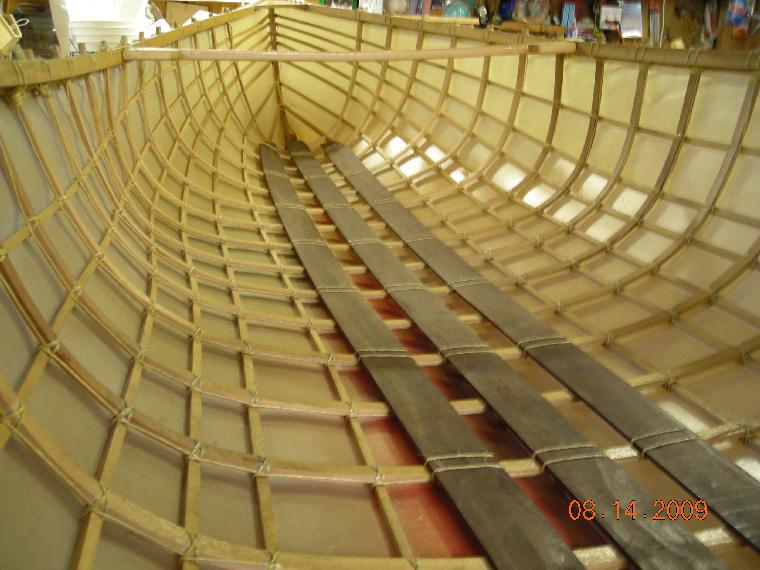
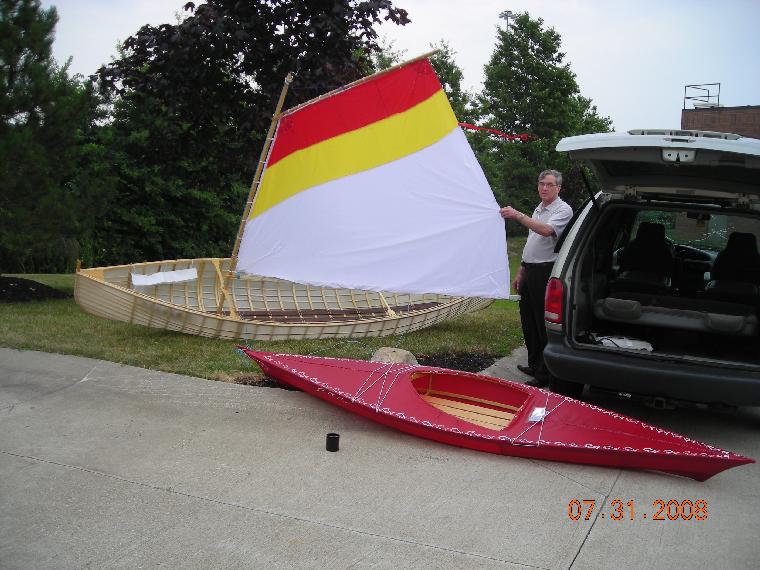
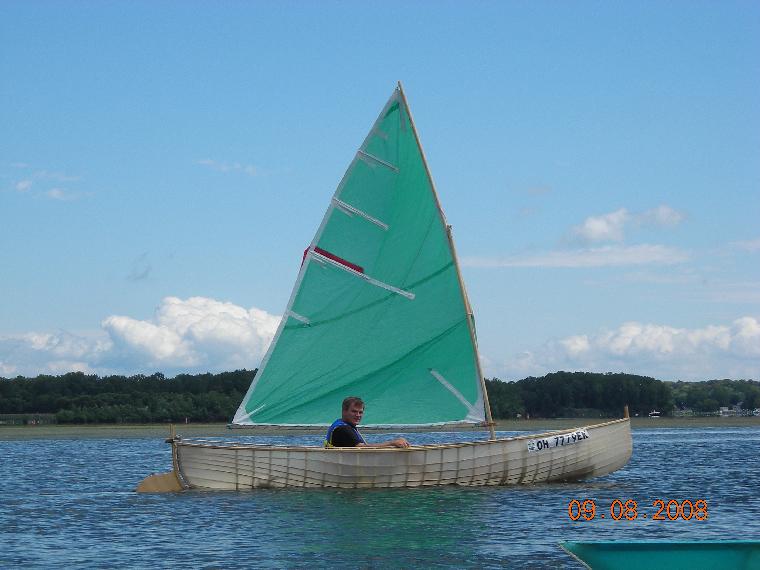
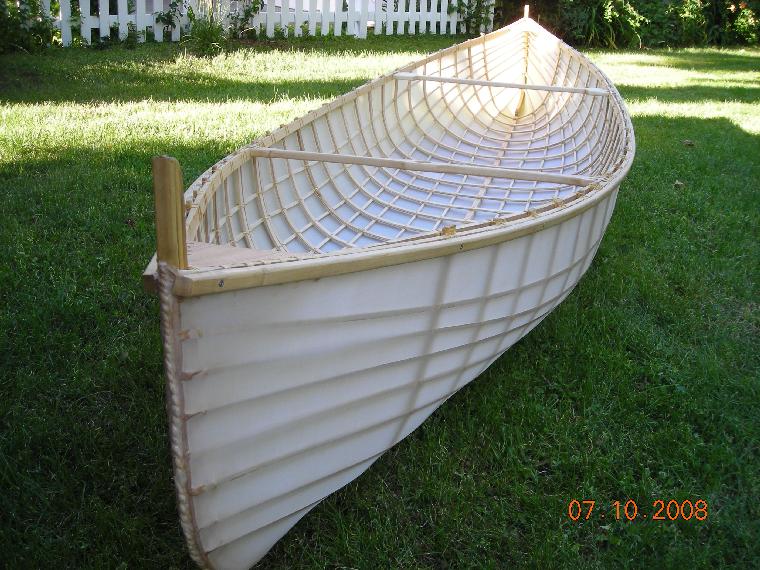
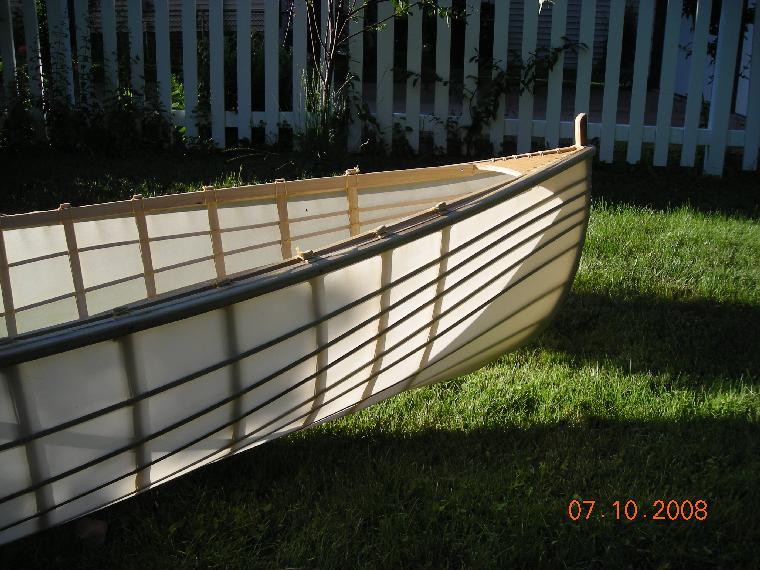
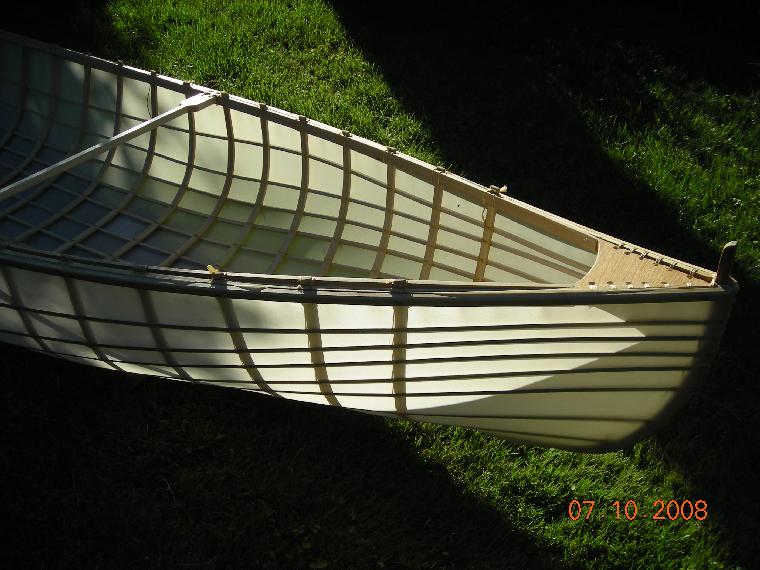
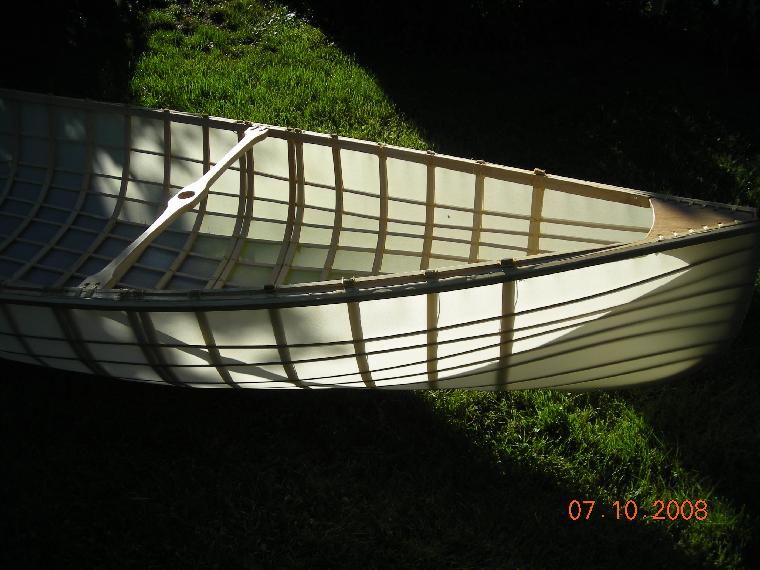
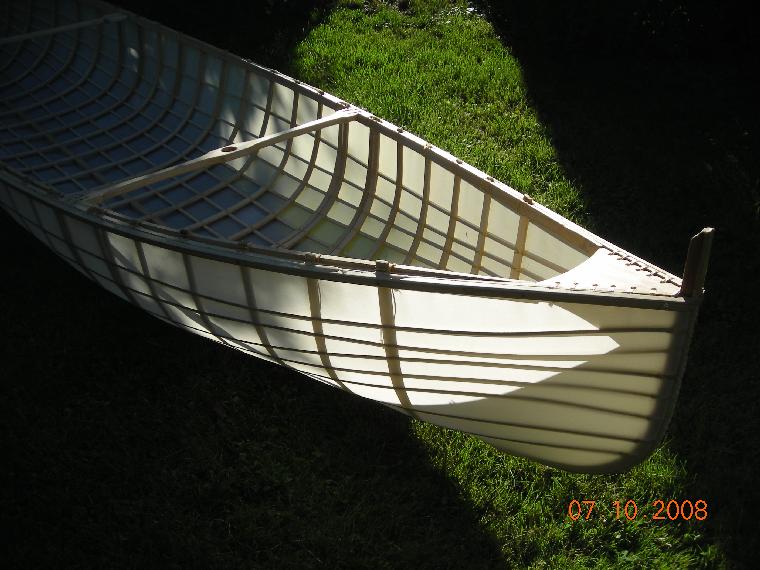
This was an ultralight canoe, weighing only 34 lbs. I built it out of poplar that I steam bent. Poplar is hard to bend as this is a soft wood. The boat was perfect, but I used nylon on it as skin. Nylon skin you have to mount while wet, because nylon loosens up when wet. I soaked it in a bucket of warm water for 10 minutes, then I kept spraying it while I worked on it. Once I was done putting the skin on, I let it dry. As nylon dries, it shrinks. Unfortunately it shrank too much and distorted the boat shape quite a bit. From some shot, you can see on the stringers' distorted shape and the huge rocker it had - due the the shrink. I never used nylon after this boat, the best is dacron. This was a purely lashed frame. On the bottom I had a 5" shoal keel and it was enough to sail in shallow waters. Once the wind hit the sail, the boat creeked like a baskeet. It was light and fast, it was a blast to sail. I took this boat apart because I could not live with the distorted shape. The green tarp sail was a gunter sail and it was taped. The sliding gunter needed a bracket to prevent distorion of the sail. I did not build that, instead I sewed up several other sail types that worked equally well. On one of the pictures a coworker of mine checks out the canoe along with one of the kayak I built. 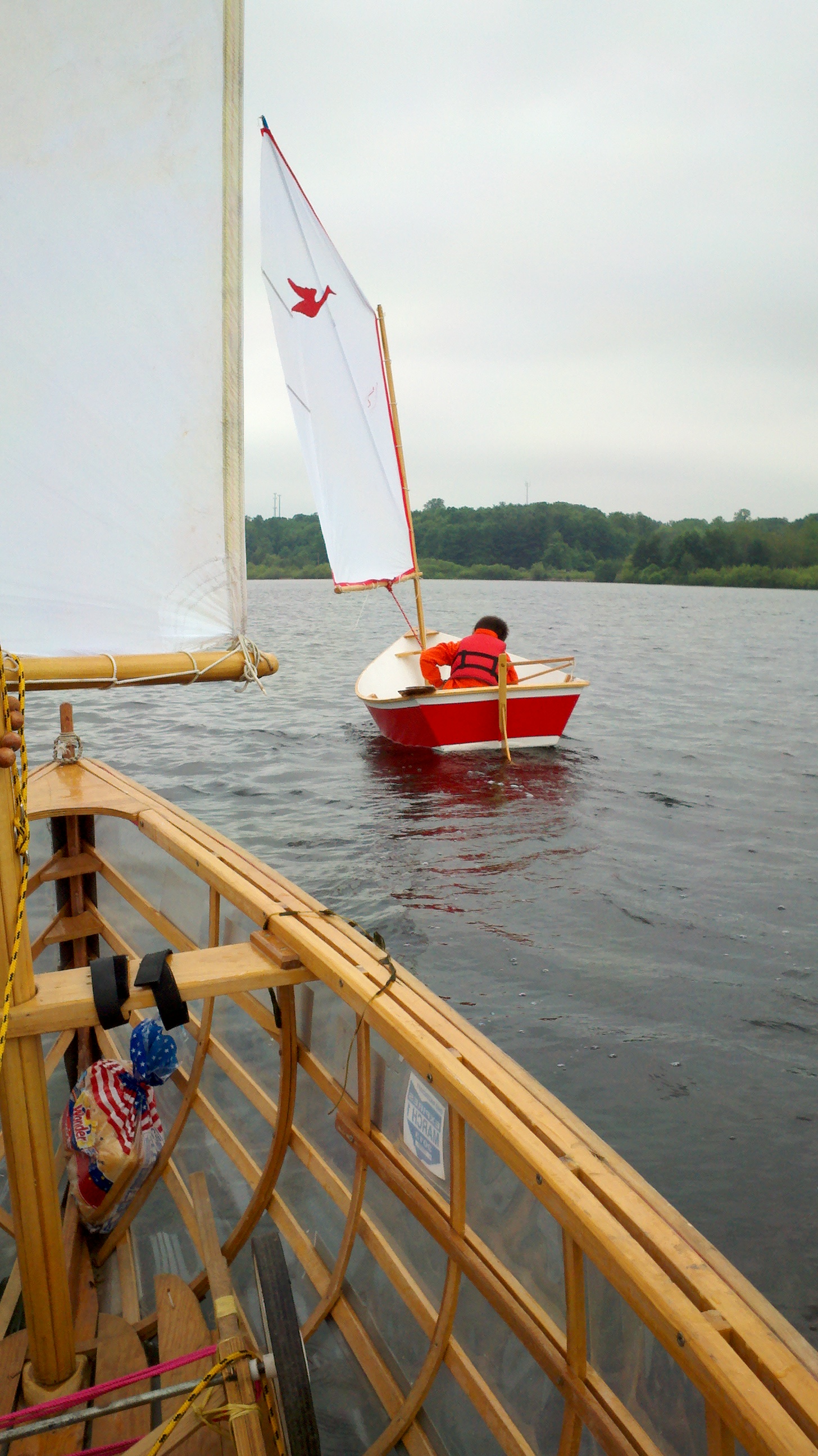
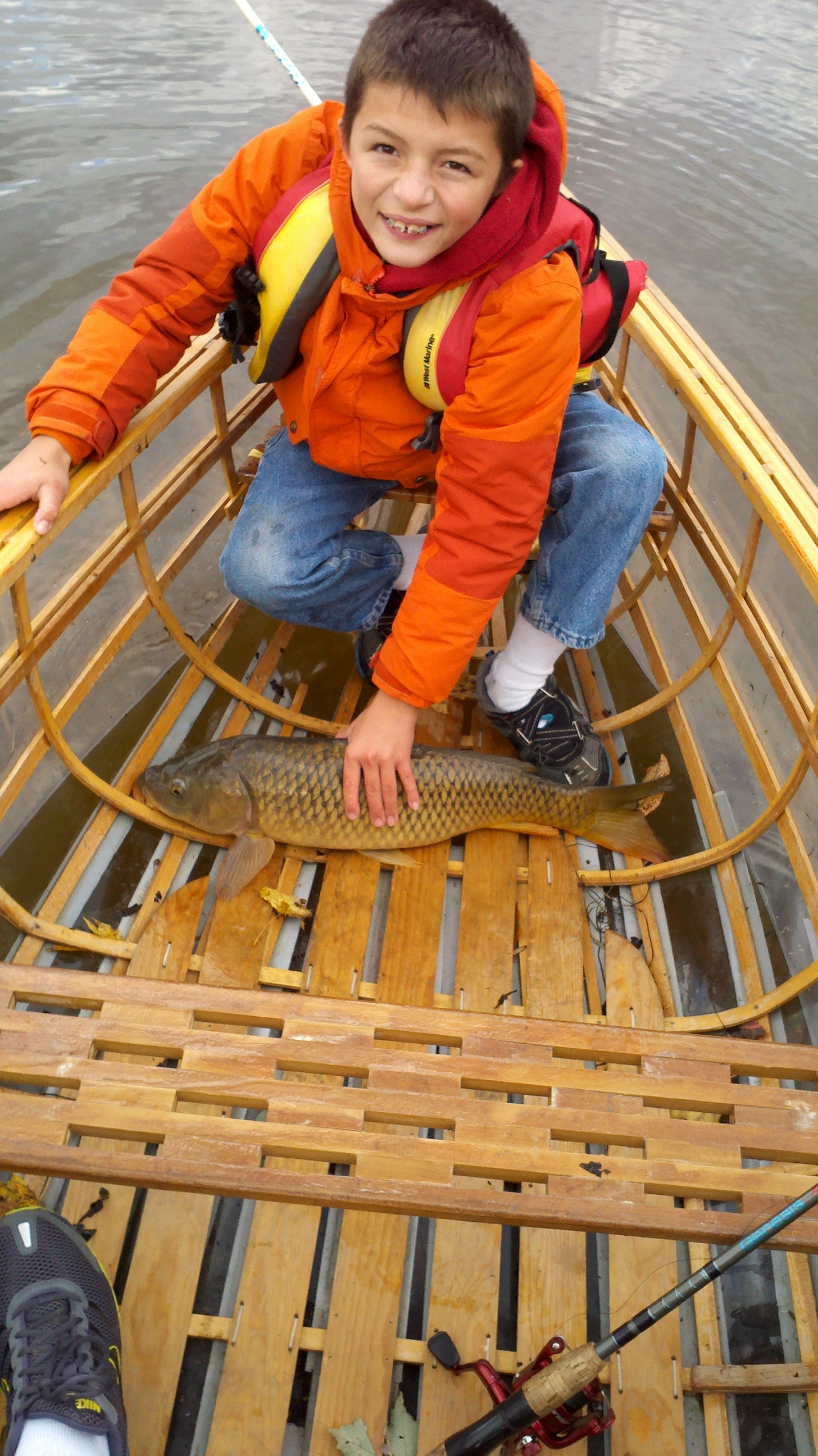

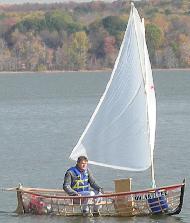

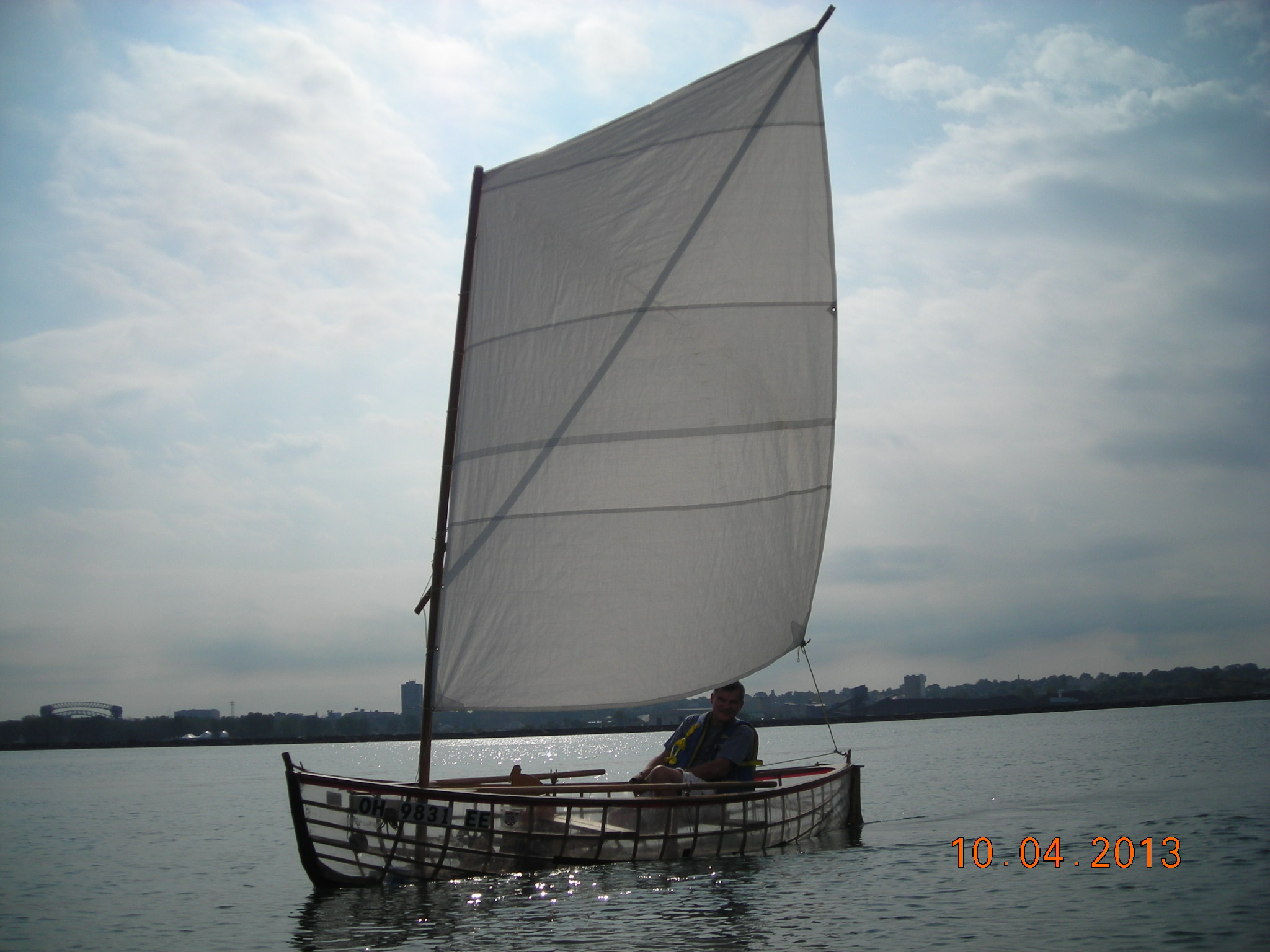
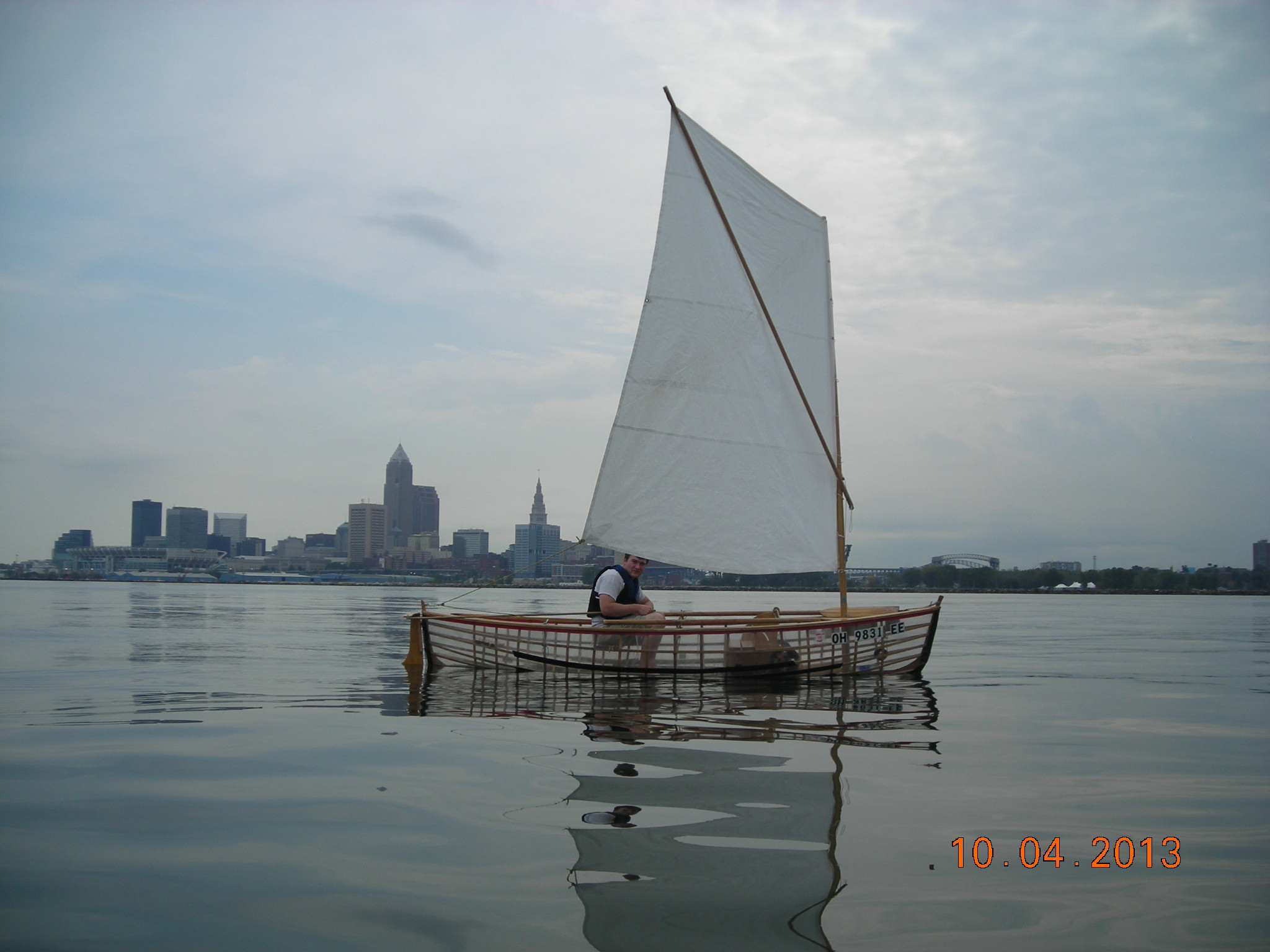
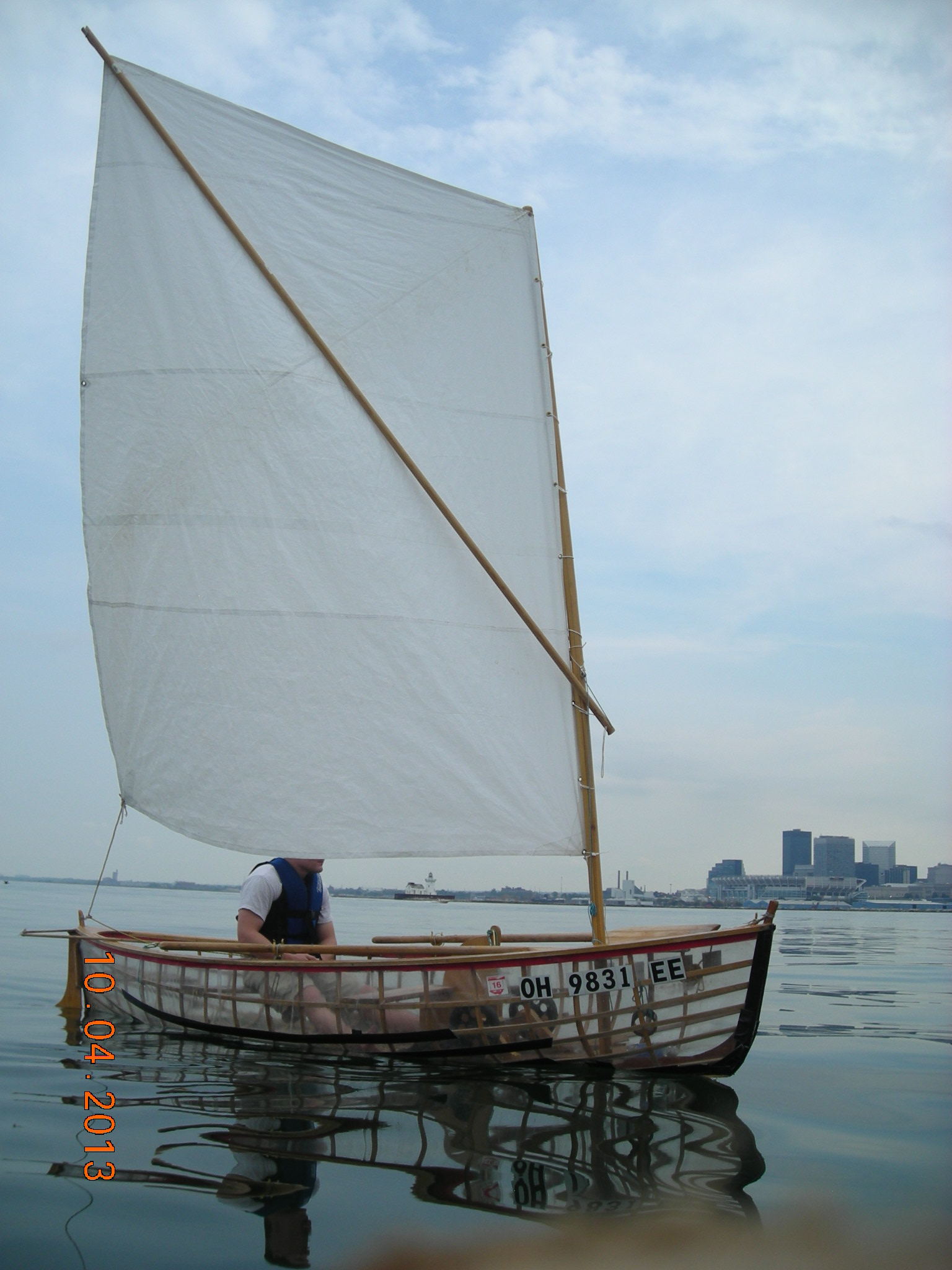
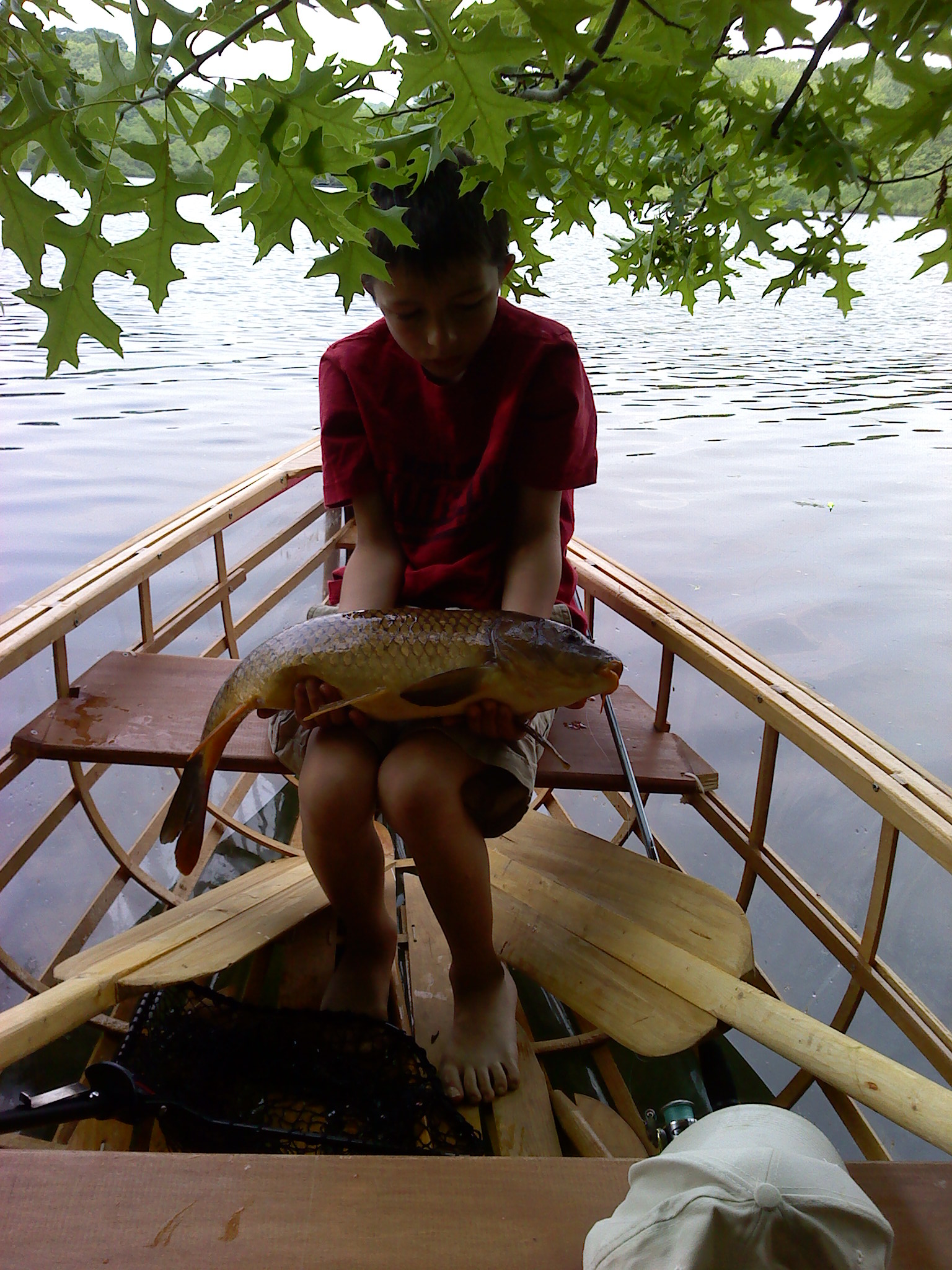
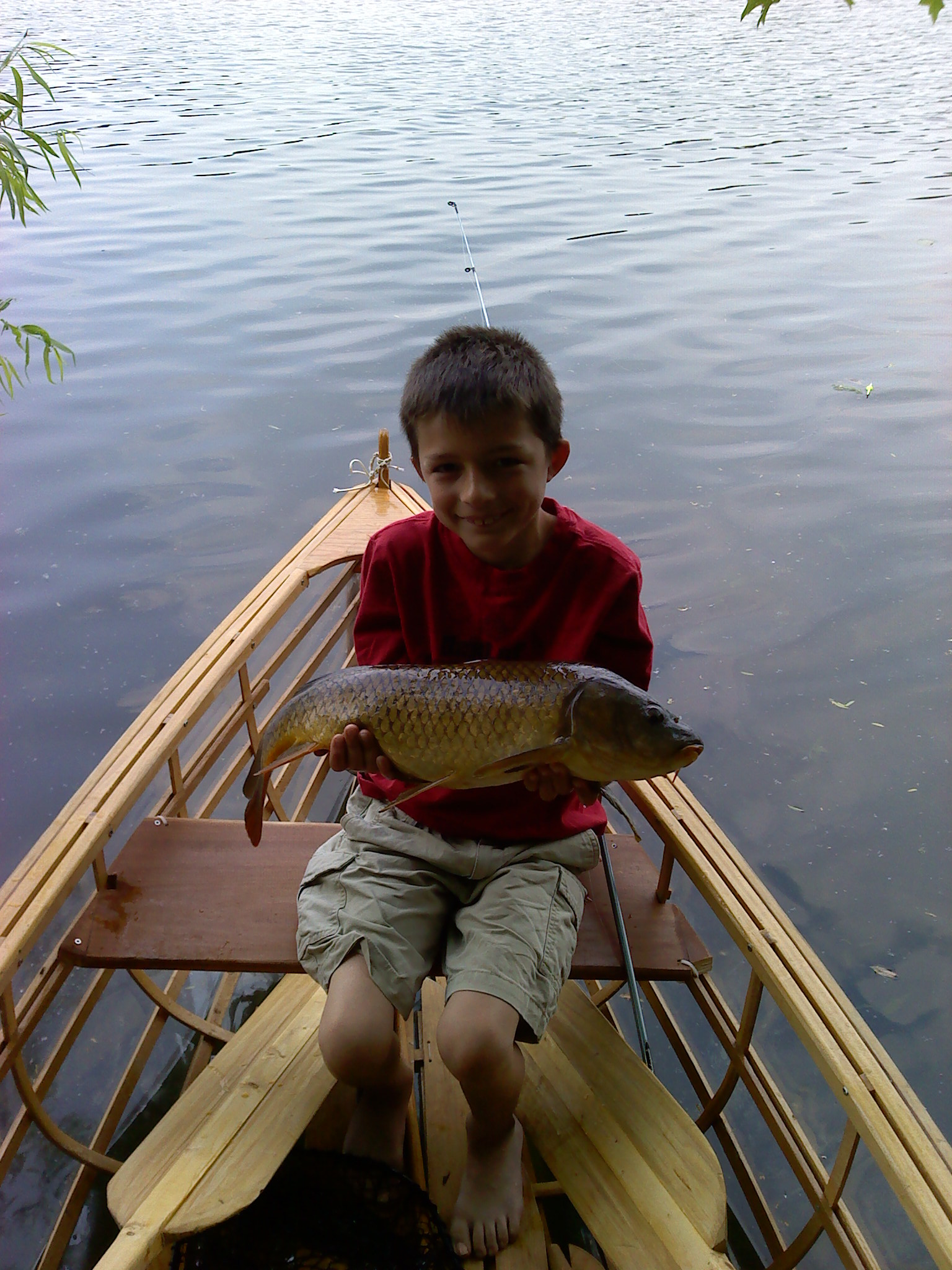
This is a see through boat I built out of stram bent poplar, and covered it with 20 gauge vinyl. This is a boat I built early on and used screws to join the ribs with the stringers. Eventually the wood shrank, exposing the screw heads a bit and then that kept rubbing on the vinyl, eventually working through it and having a small leak. I covered the stringers with black gorilla tape, and it saved the boat. We used this boat for sailing and fishing all over the USA. We sailed and fished with it many times. In Manatee Springs, Florida, for example we saw many turtles hiding in the mud in the river, In Michigan, we saw tracks on the bottom of the lake as clams move, I guess. We also saw a lot of fish there as the water is crystal clear. This is a great boat. I sailed it very hard and many times, so my 1/4" thin ribs all broke. I fixed them many times, but at one point, it became too many things going bad with it. I took the skin off and is now resting, until I fix it or build a brand new with the exact same dimentions. This is a 14' boat of my own design. I loved this boat. 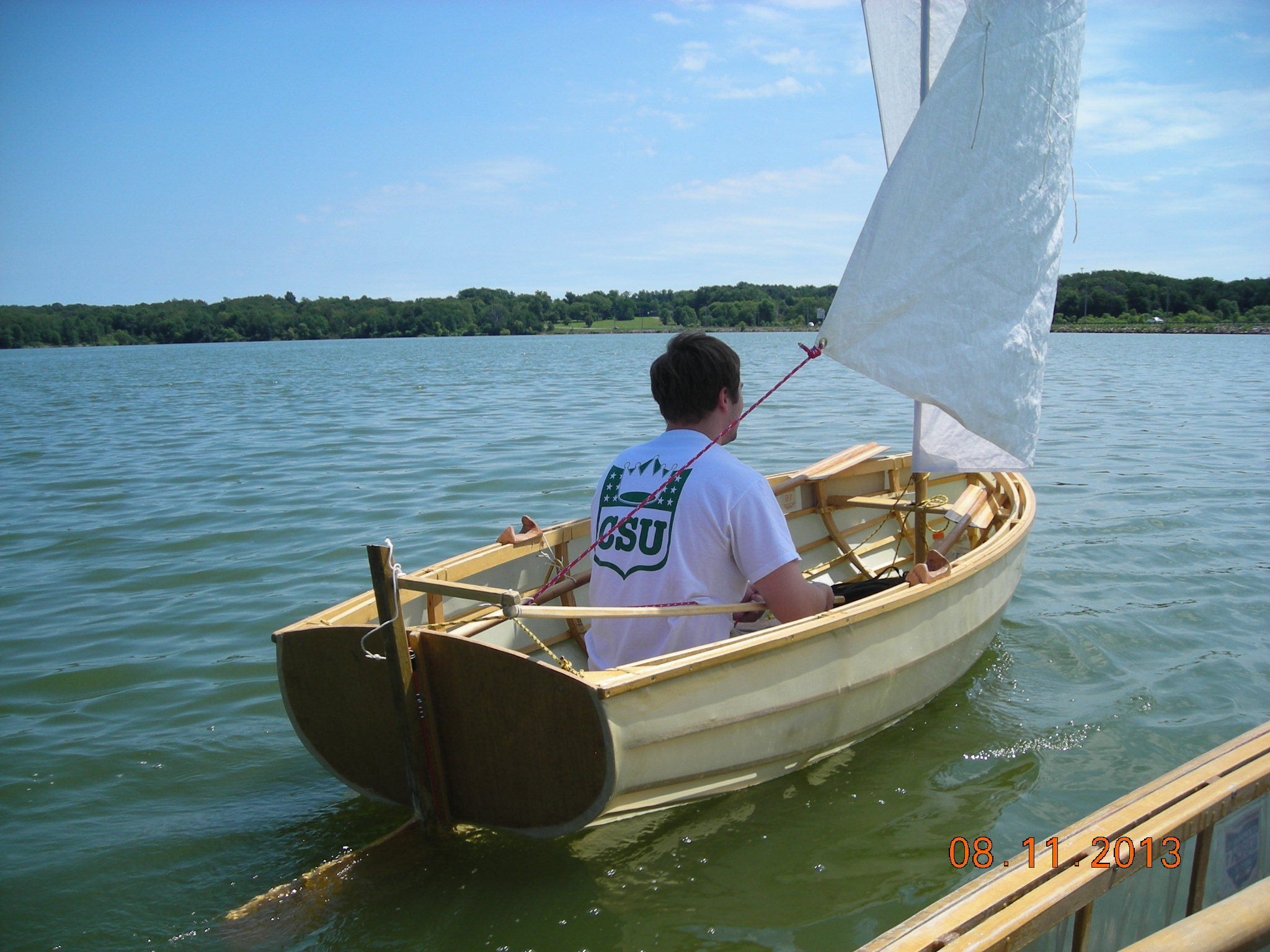
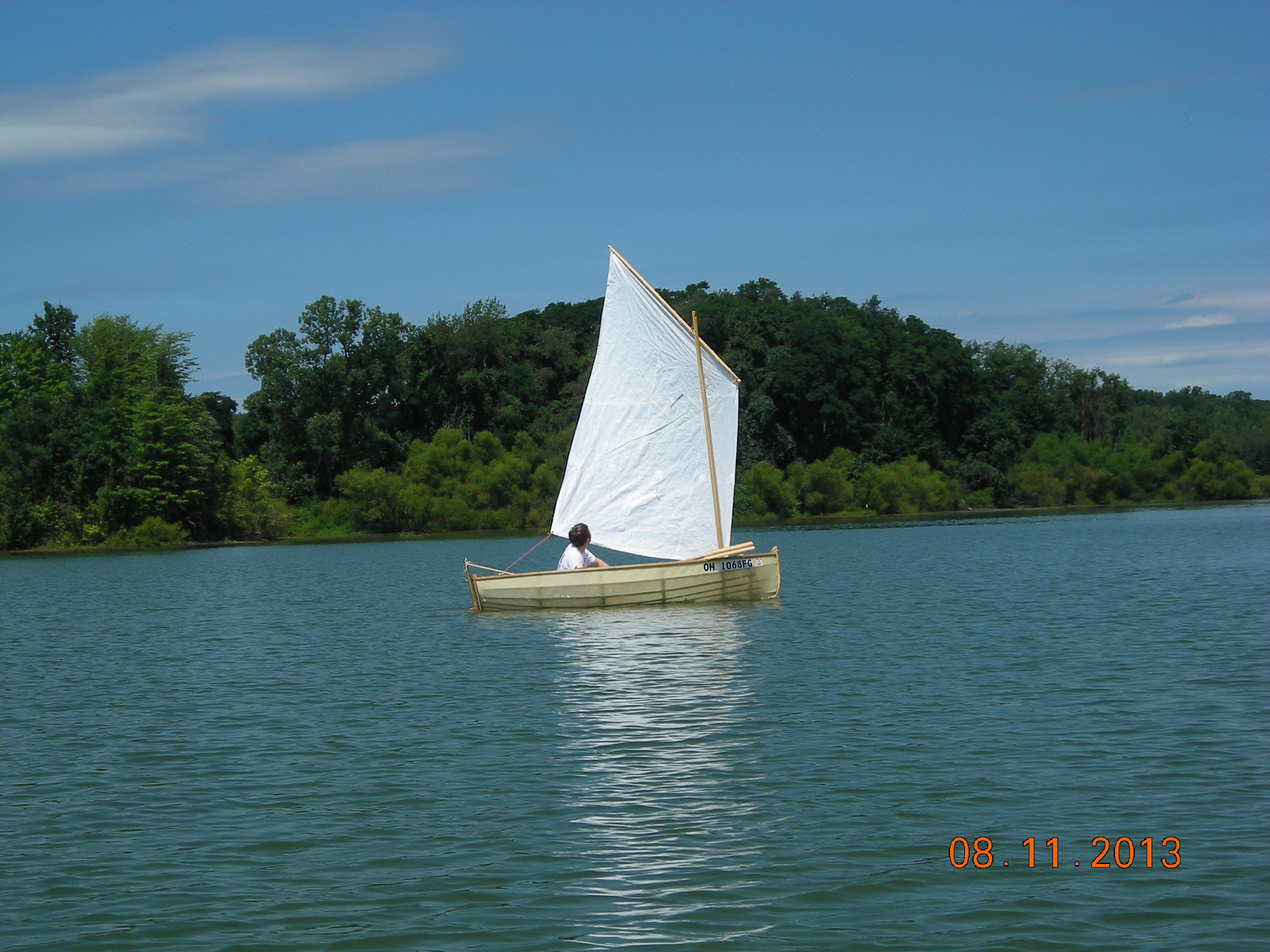
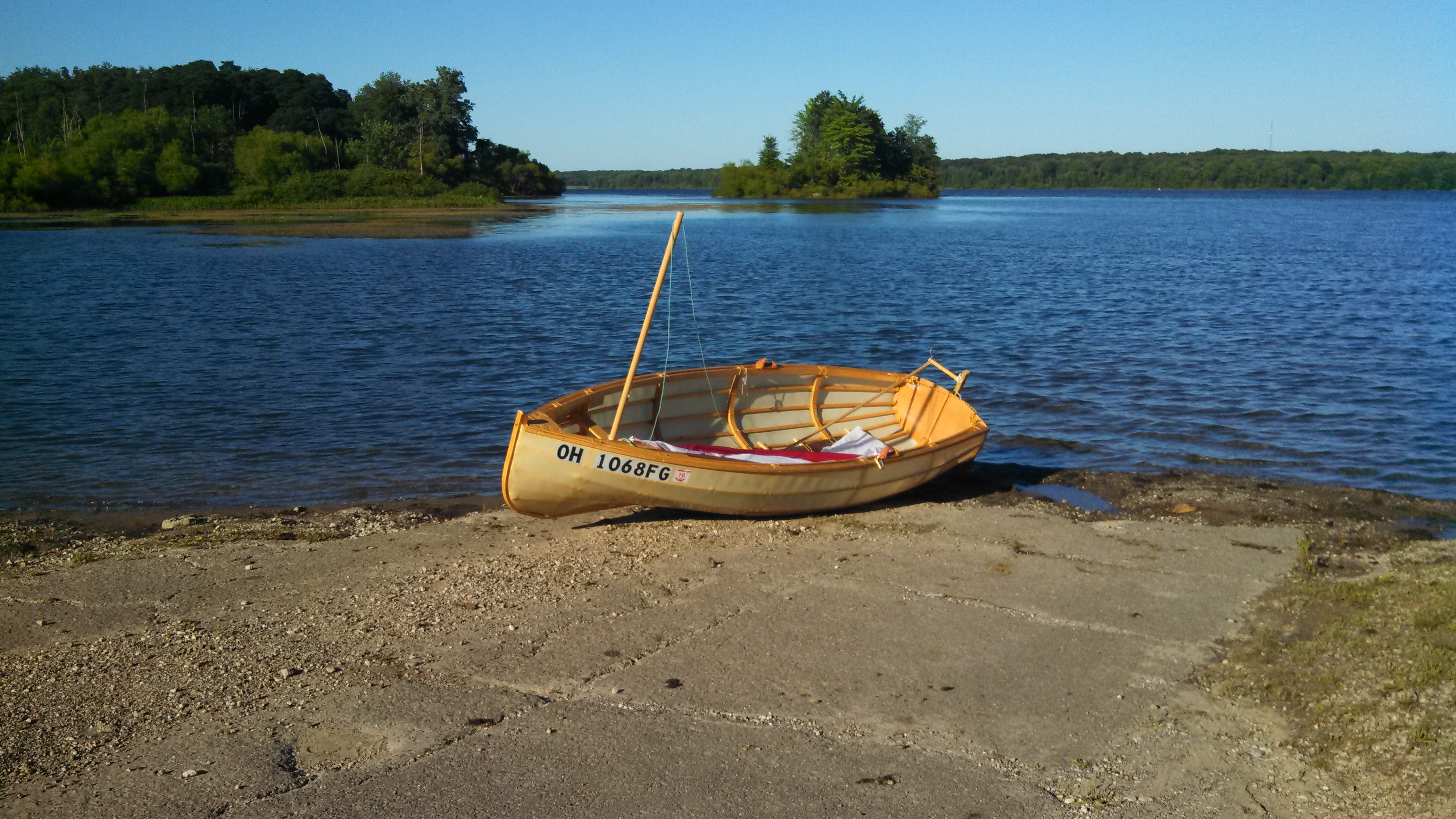
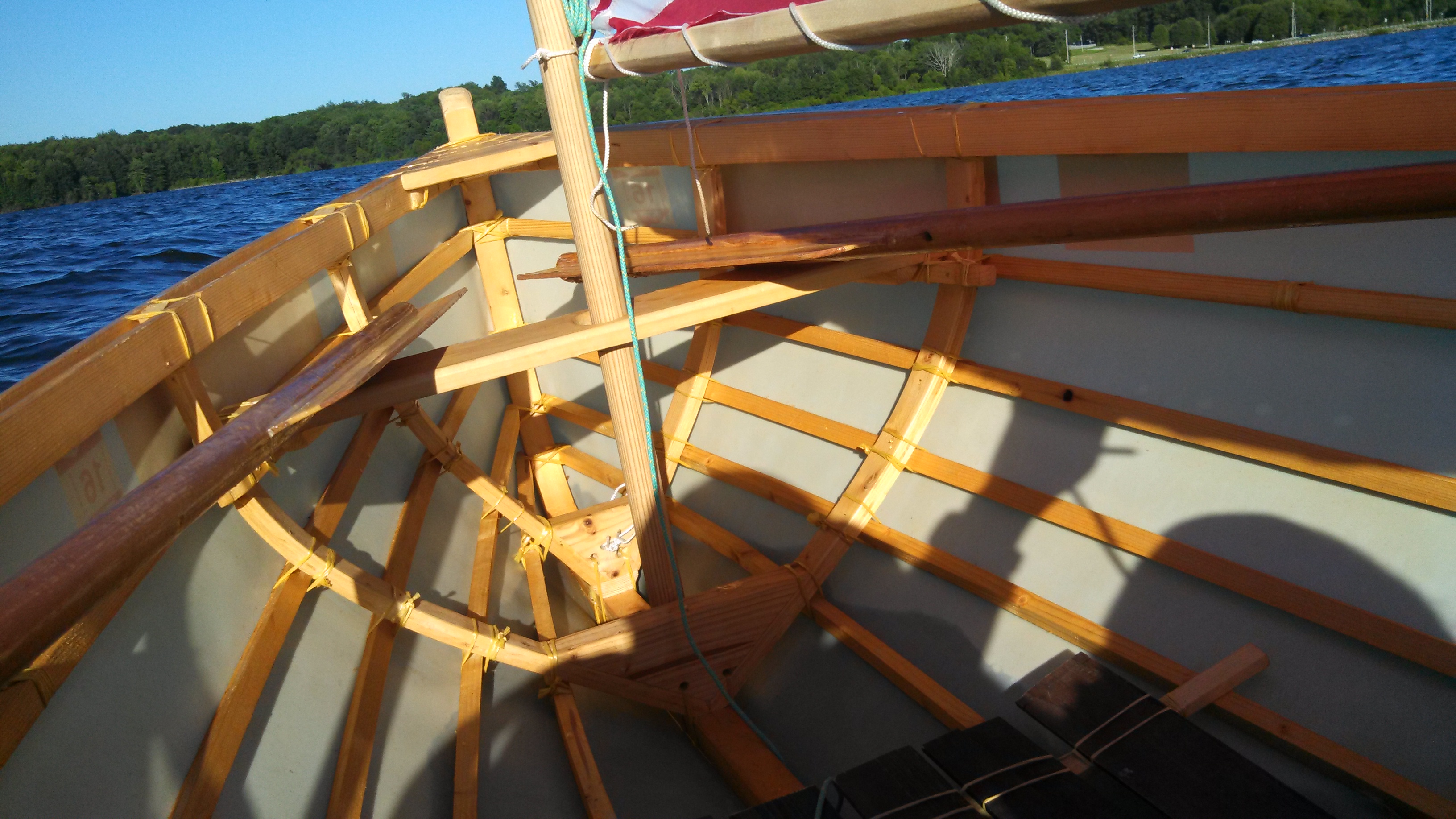
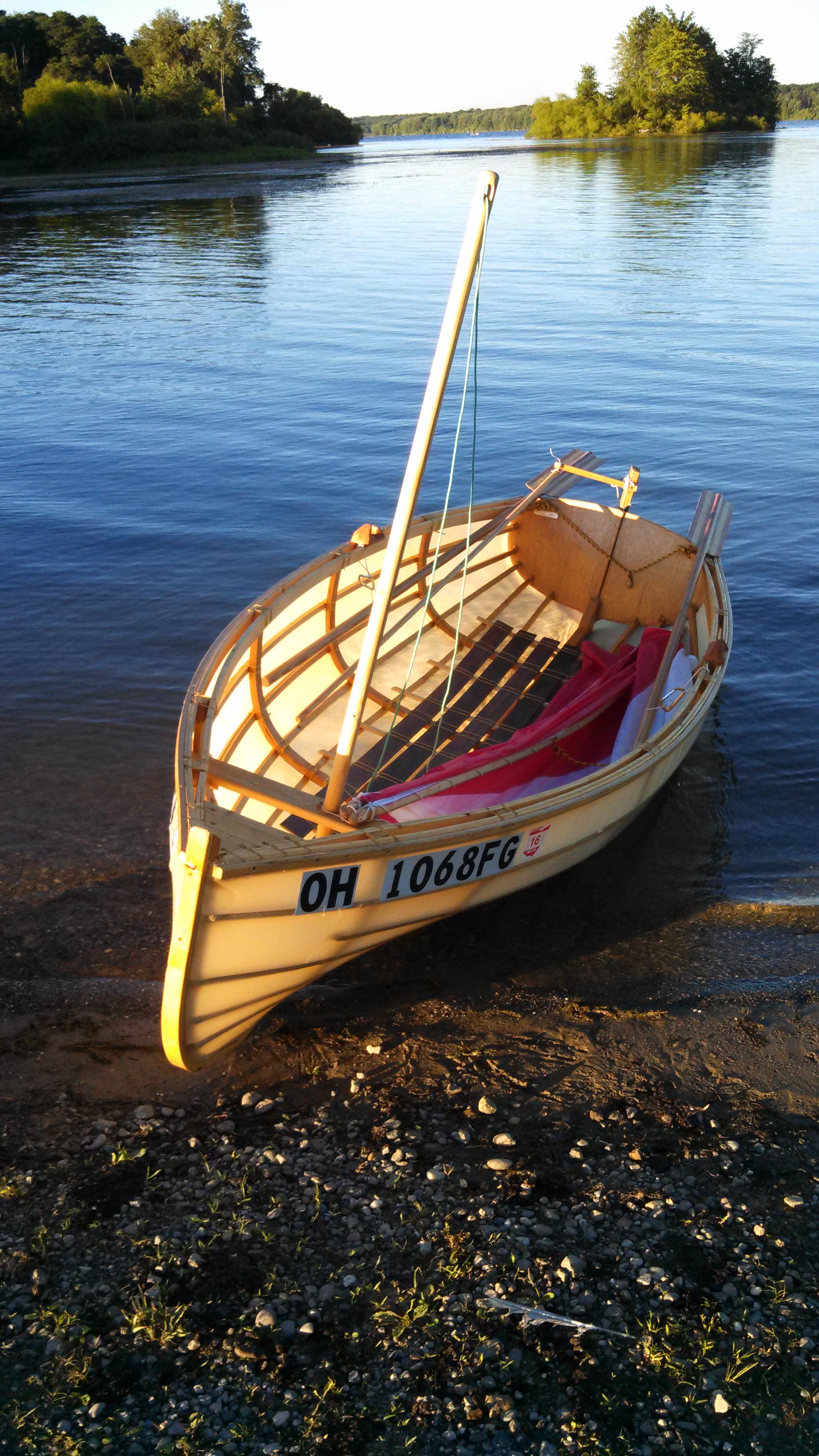
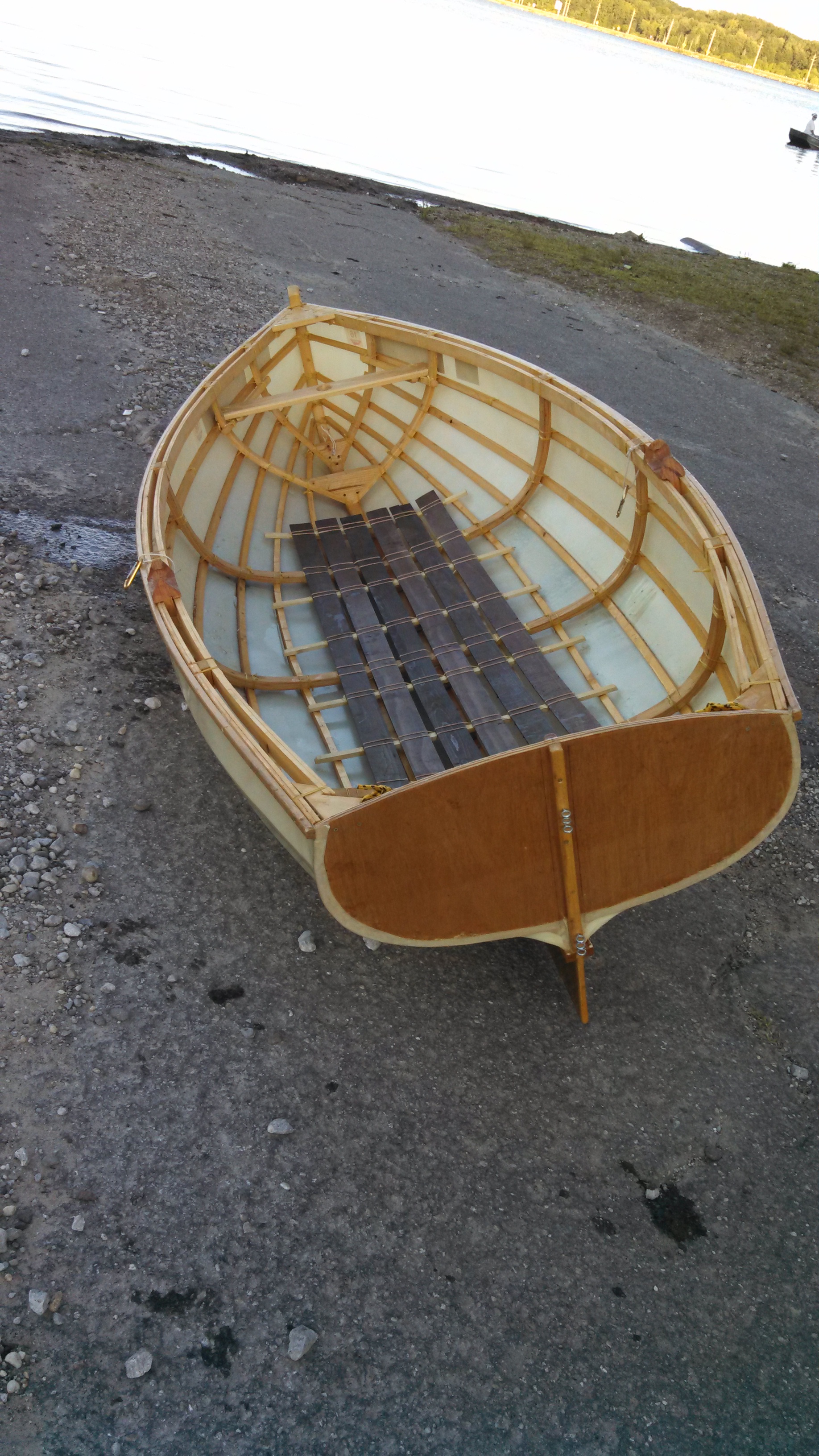
This boat is called the Lawton Tender. The offsets I got from John Gardners' book of "Building Classic Small Craft". The plan is for a planked yacht tender, but I wanted it in a skin-on-frame version. So, because the shape was designed for a lot heaver boat (planked) I had to drop the gunnels and chines about 2", I believe. Another interesting fact about this boat is that it was built out of construction 2x4s. Yes, these frames are ripped from regular construction pine 2 by 4s. I just wanted to see if I can build something really elegant and cool out of 2x4s, that's all. So I took a piece of downspout, taped one end off with duct tap, raised the other end up, and filled it with water. I ripped the 2x4s to 3/16" strips and then soaked them in the downspout for about an hour. In the meantime on a 4 by 8' plywood I drew up the ribs, and put large screws along the lines - these would be the frames. So once the wood was pliable, I lamintaed 5 of these strips with Gorilla Glue. This glue is water/moister activated, so this was the perfect application for this. Ans voila, we have a boat out of 2x4s. The skin is dacron and sealed with Marine West two component resin. The sail I sewed up of white tarp, of which I got from the internet, and sewed up a standing lug sail. The mast is a bit too short, for the sail but so far I had not had the time to build another mast. The boat has a shoal keel. So I really like shoal keels, because for a skin-on-frame boat that is a life saver. That is the first thing that will hit the bottom, not the skin, second, I don't like the center board box in the middle taking up precious little room. Plus this boat sails well anyway, I also like these long push-pull rod rudders. This gives us a normal natural pose and can steer the boat from any position in the boat. I built these boats for pleasure not racing so if I don't turn as fast as with a center board, oh well, they turn eventually. 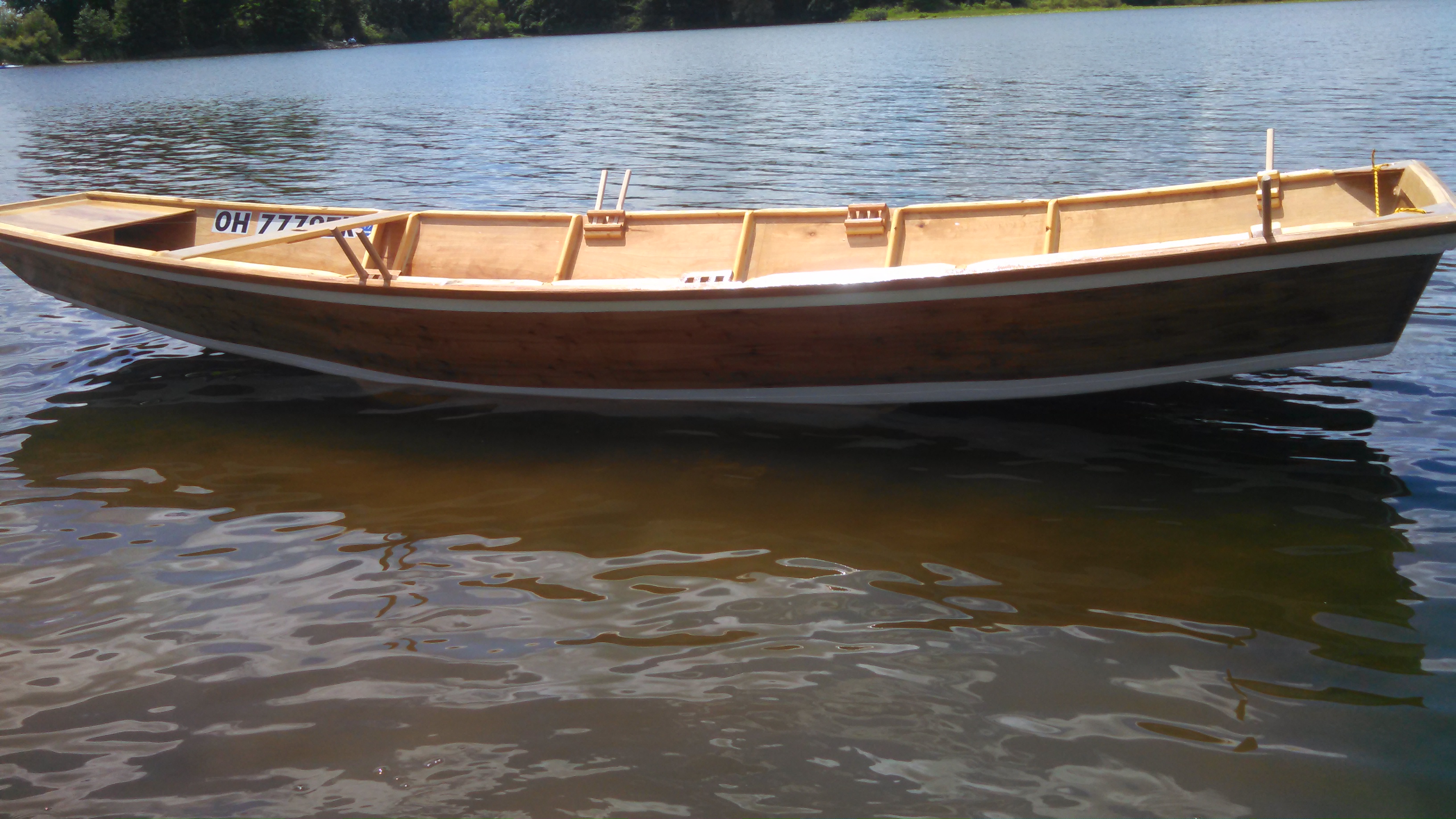
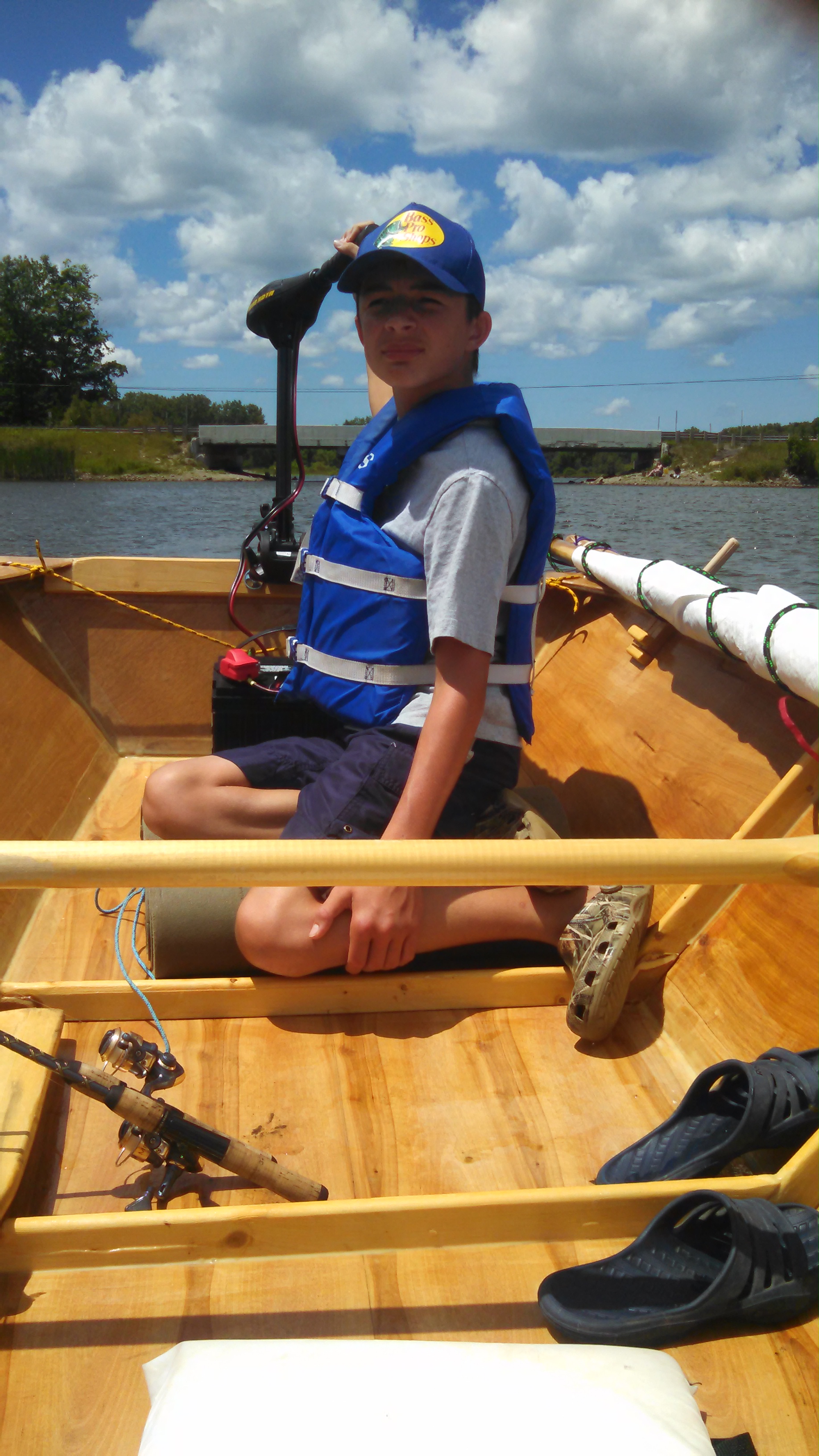
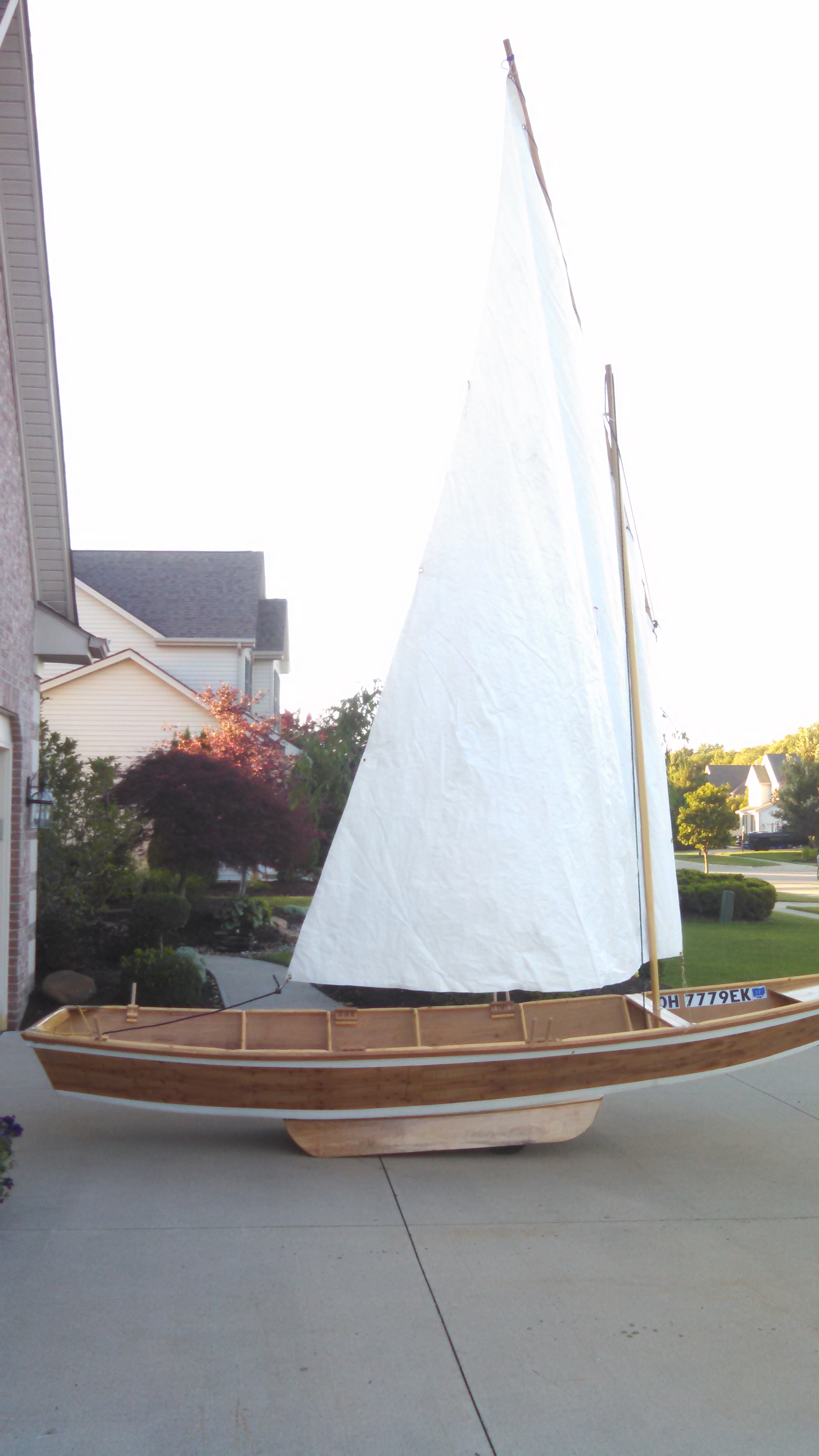
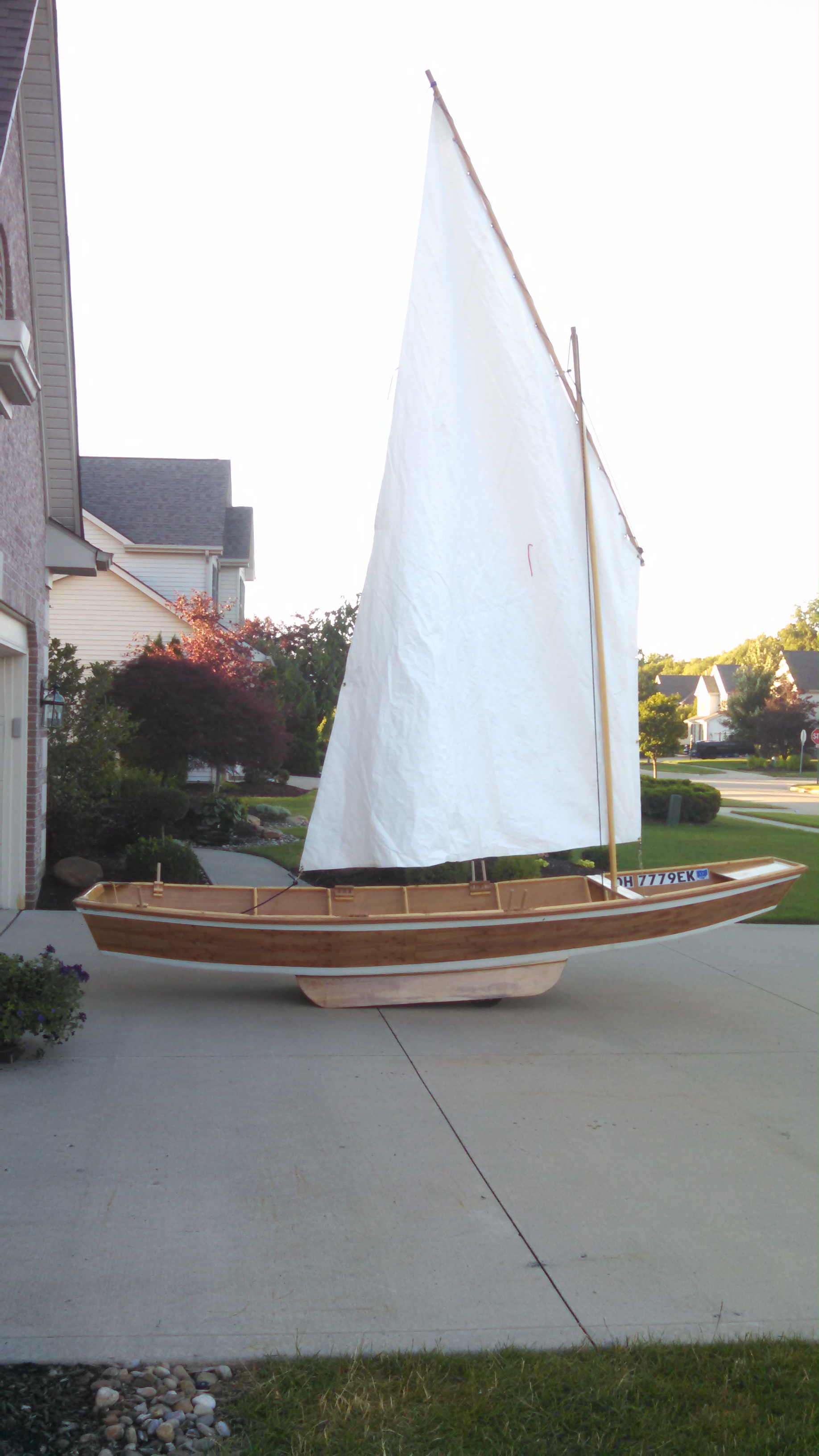
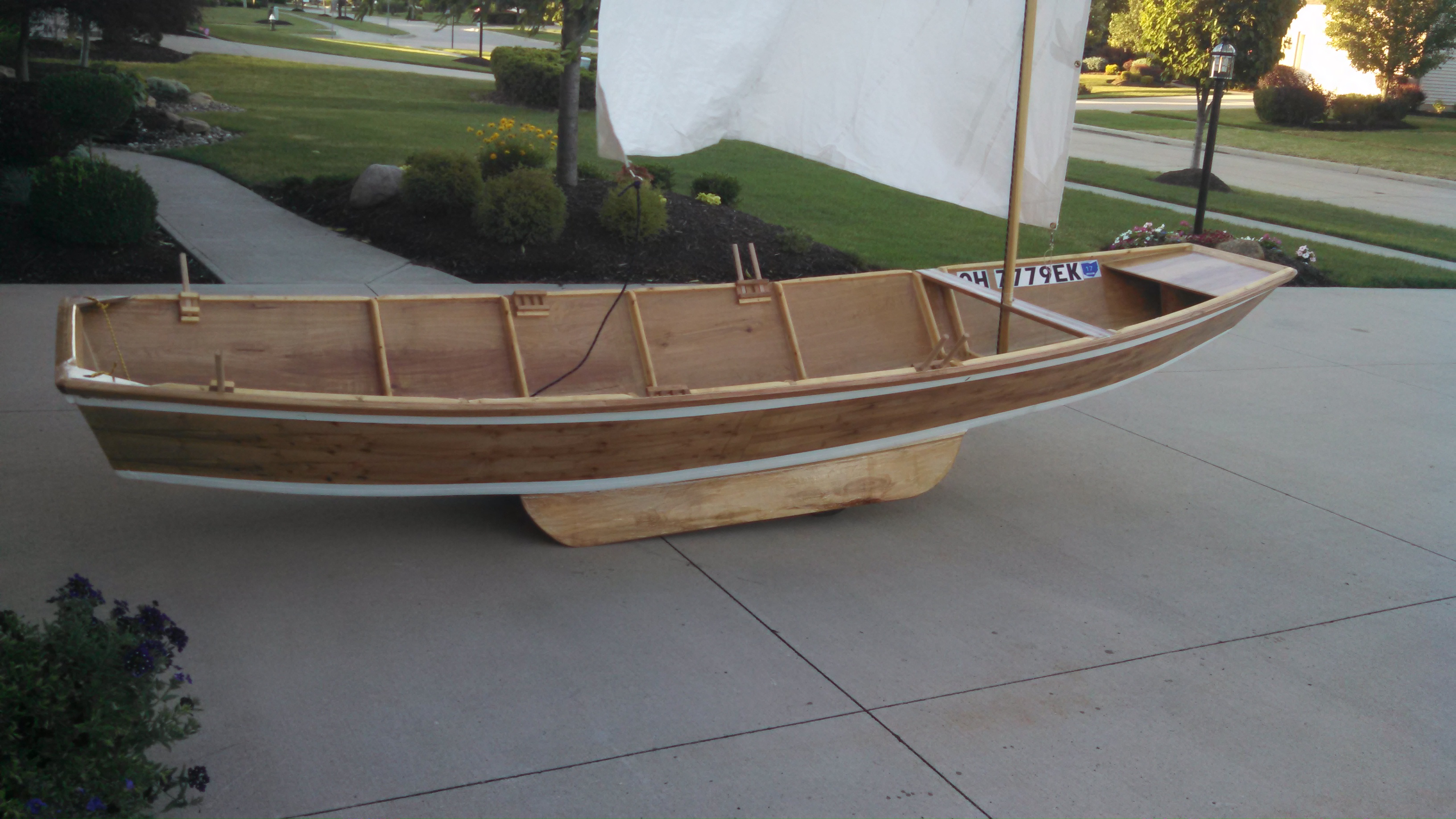
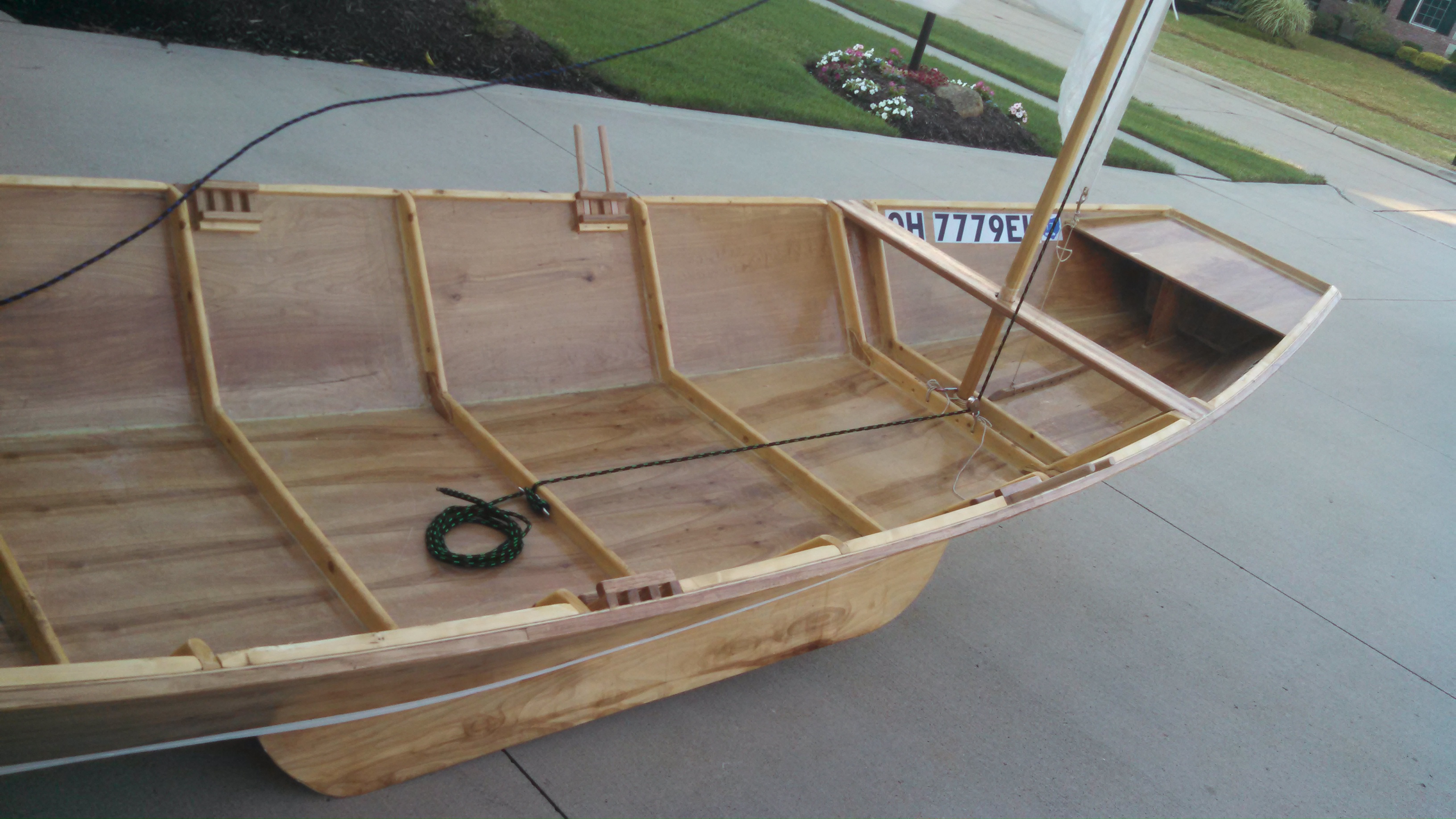
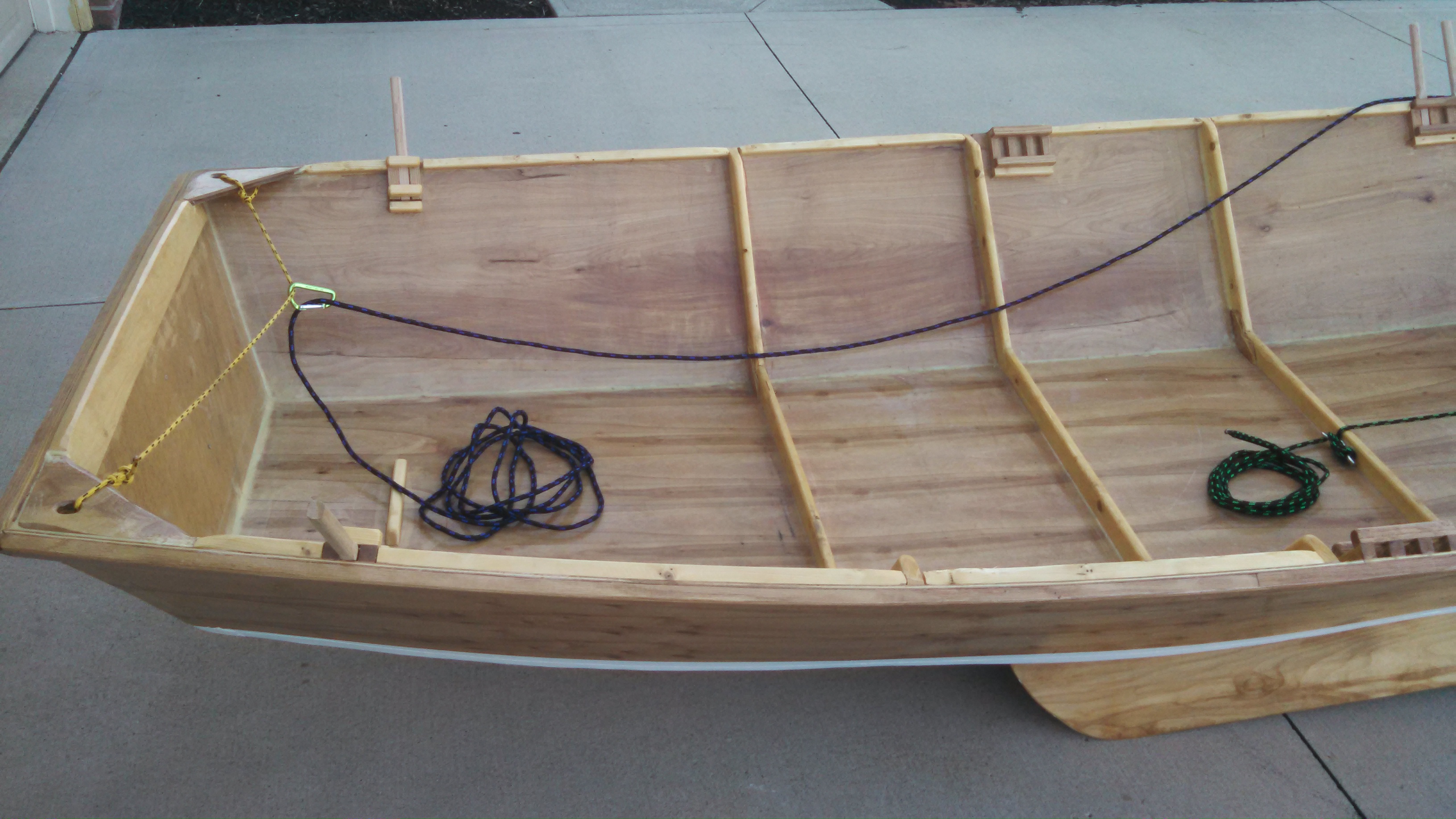
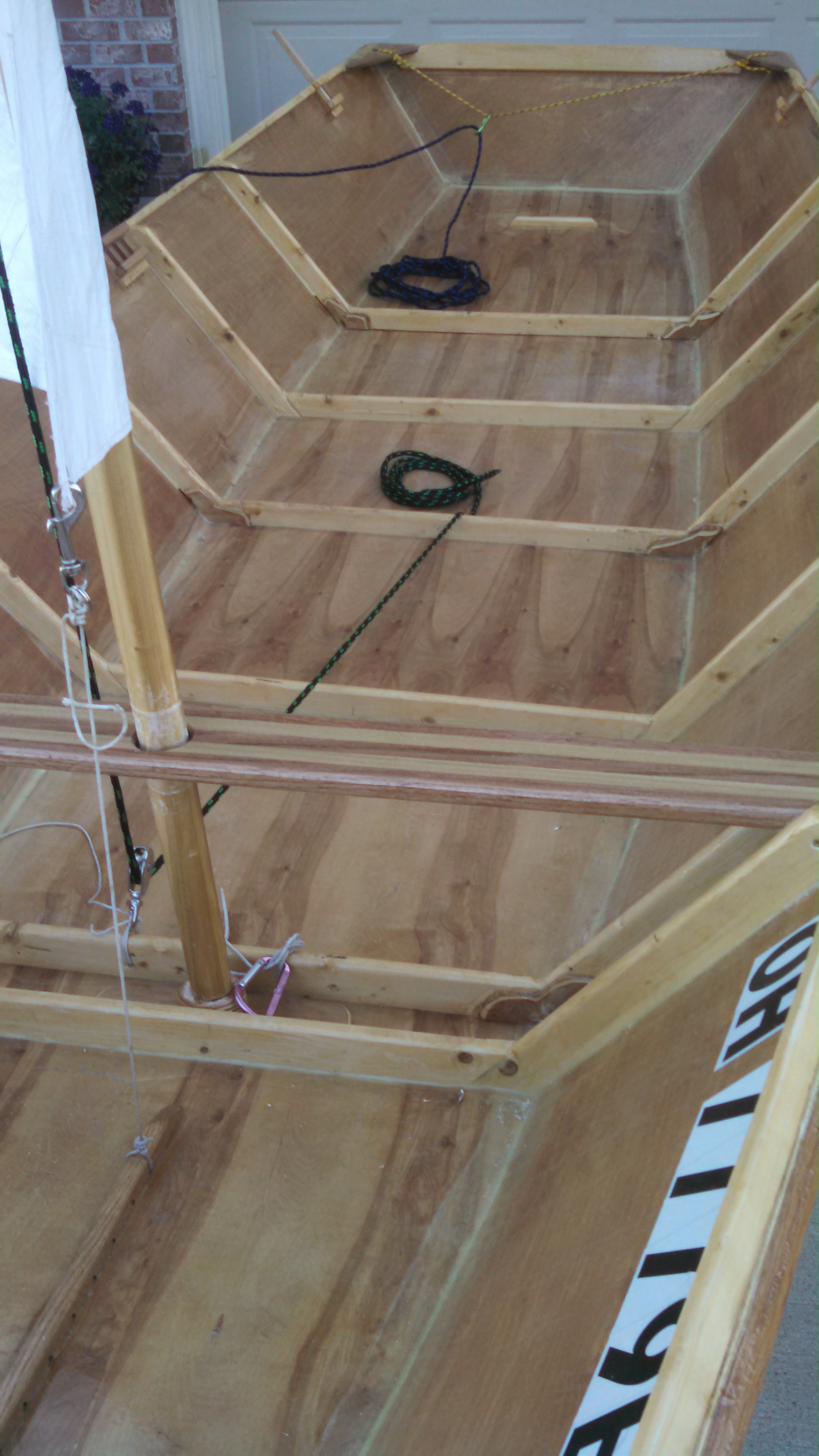
This boat is a Norwegian Pram that I built primarily for fishing. It has a sail, because I got tired of rowing two growing boys, so I figured, why not put up a simpe standing lug sail and let the wind do the work. The boat has two partial shoal keels, so the boat stands on its own "feet" when on dry land. The boat does not have rudder, instead I built peg holders on the gunnel multiple places. I can put pegs in where ever I want to and use them as oar locks for rowing, or use them to place one of the oars against it and use the oar to steer the boat. This type of sailing works out pretty well, because I have less stuff to set up. The only disadvantage is that when the lines a lose in windy conditions, they get caught int the pegs easy. They also release easily because the pegs are straight. We now also have an electric motor to it, although I like the sail a lot better. Say, if it rains, the sail can be folded to a shelter. The plans for this boat came from Hannu's Boat Yard. http://hvartial.kapsi.fi/ The sail, mast position, extra frames, shoal keels are my ideas, as I like to experiment. 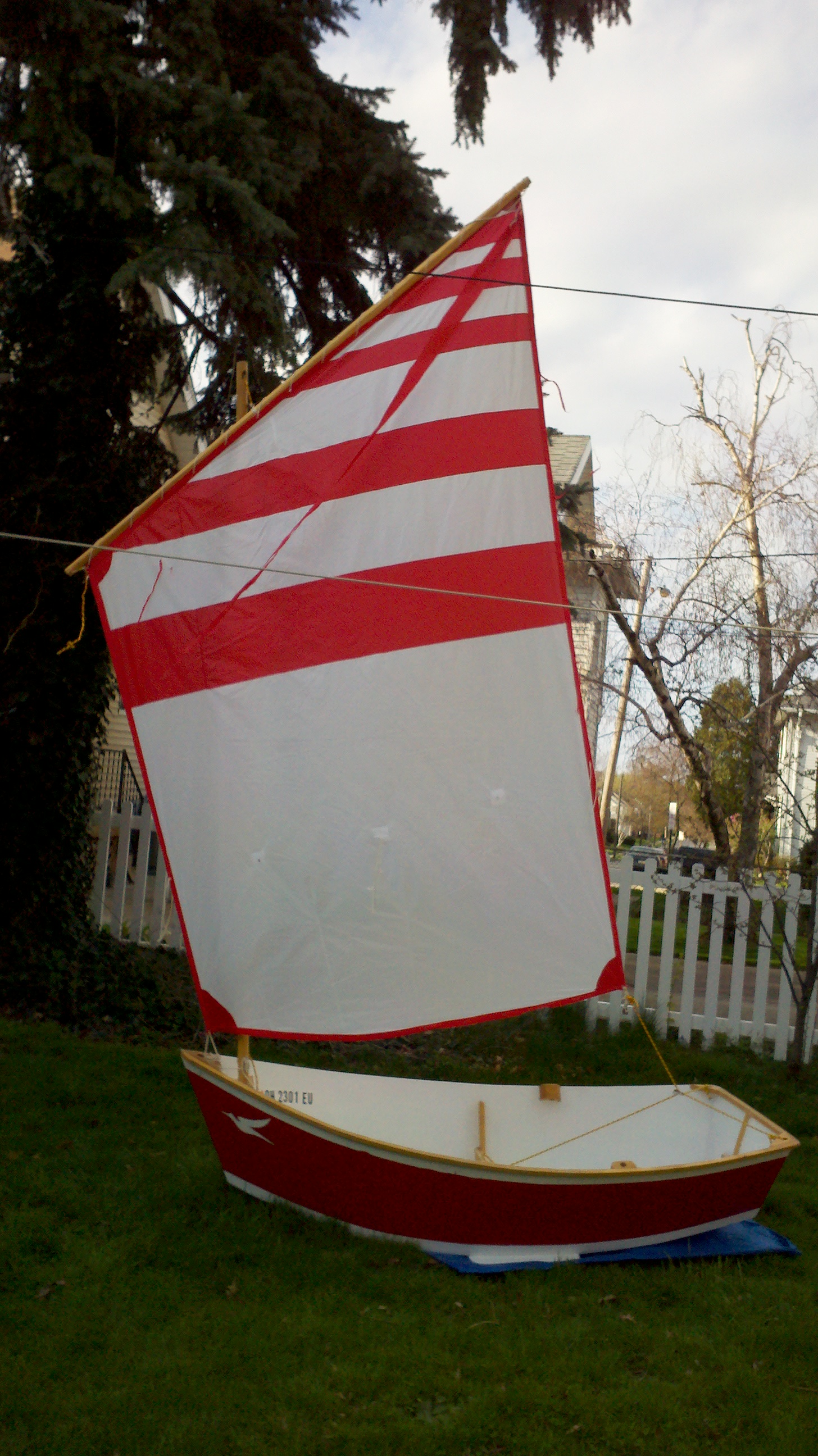
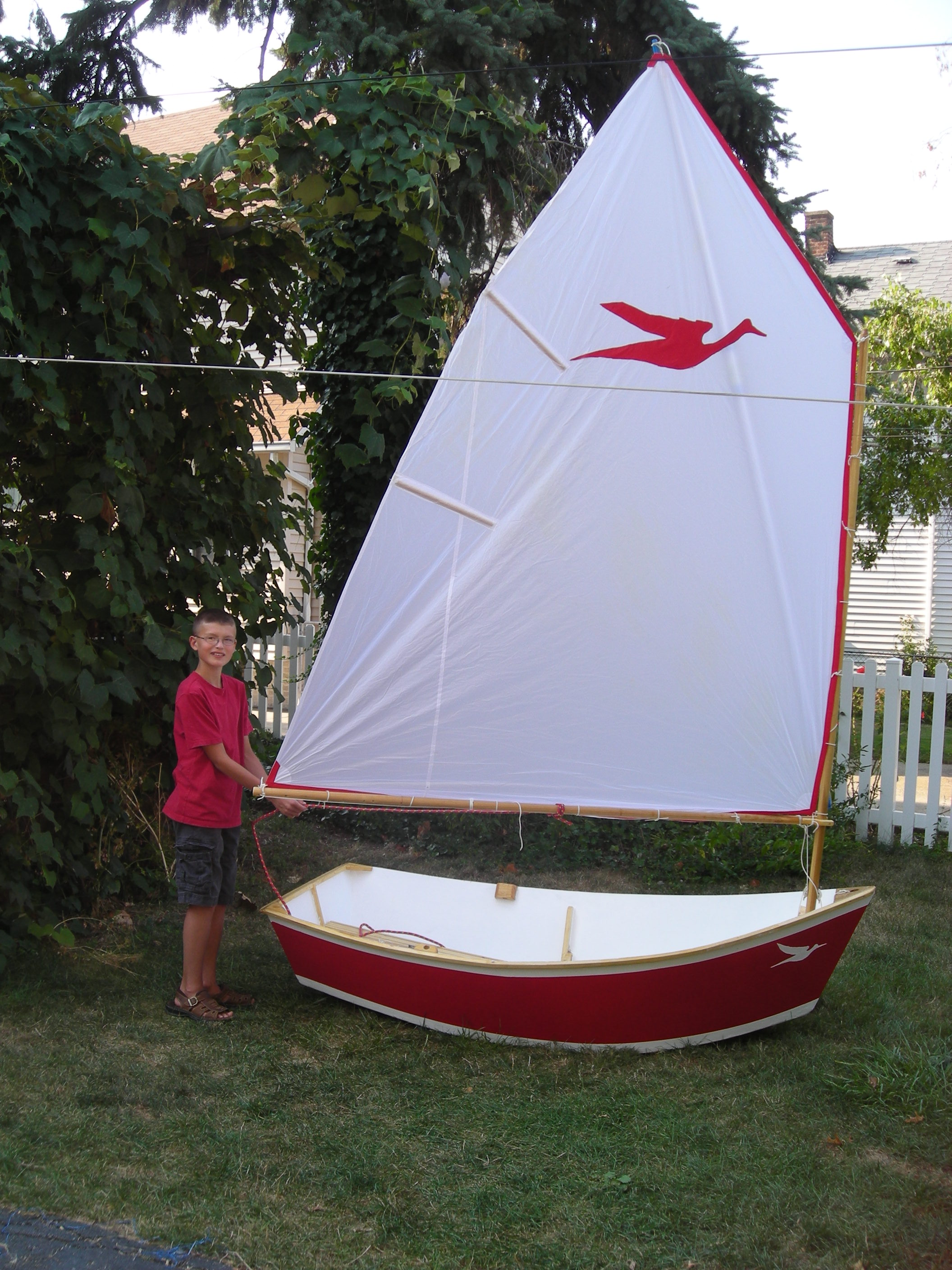
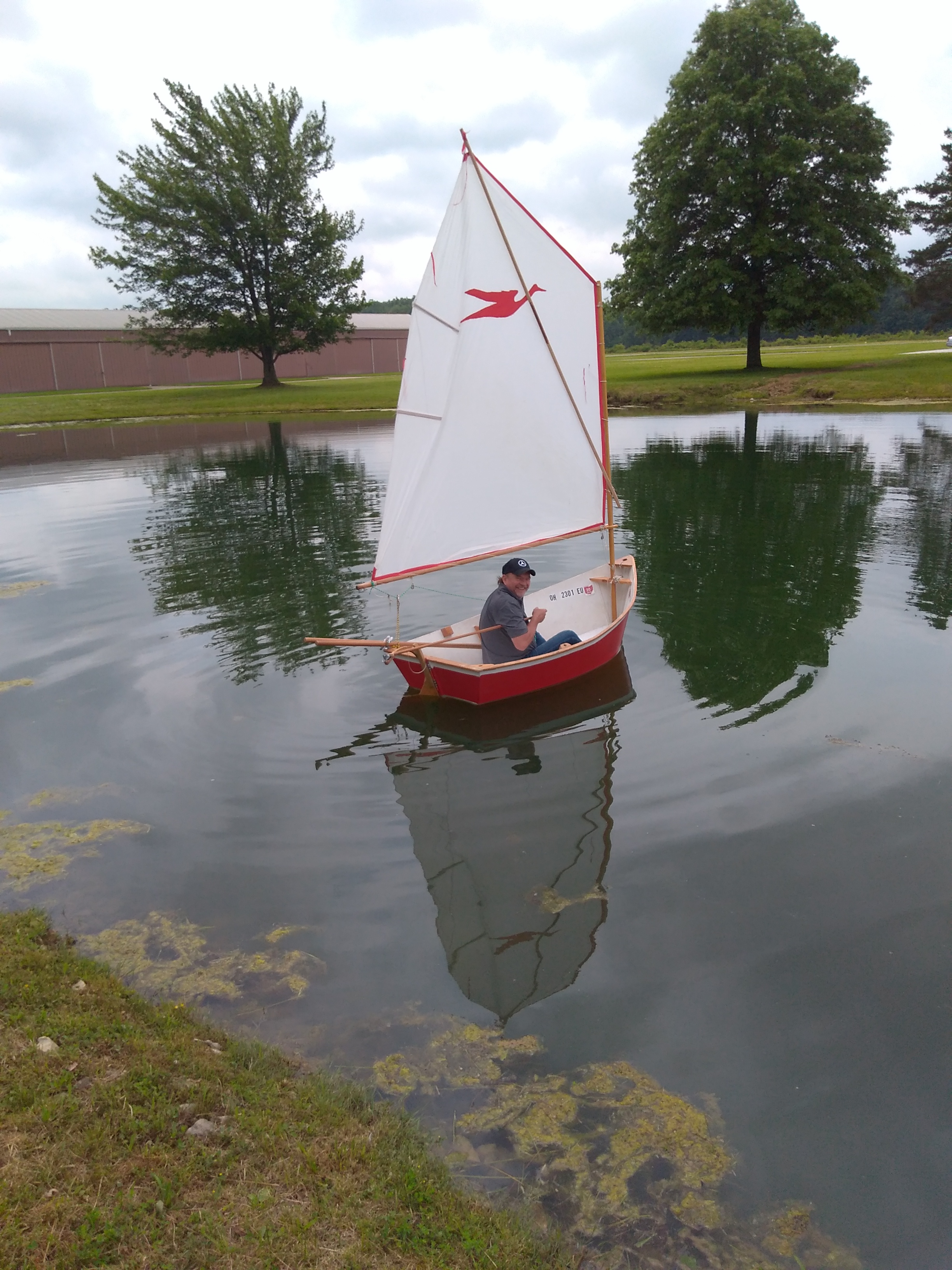
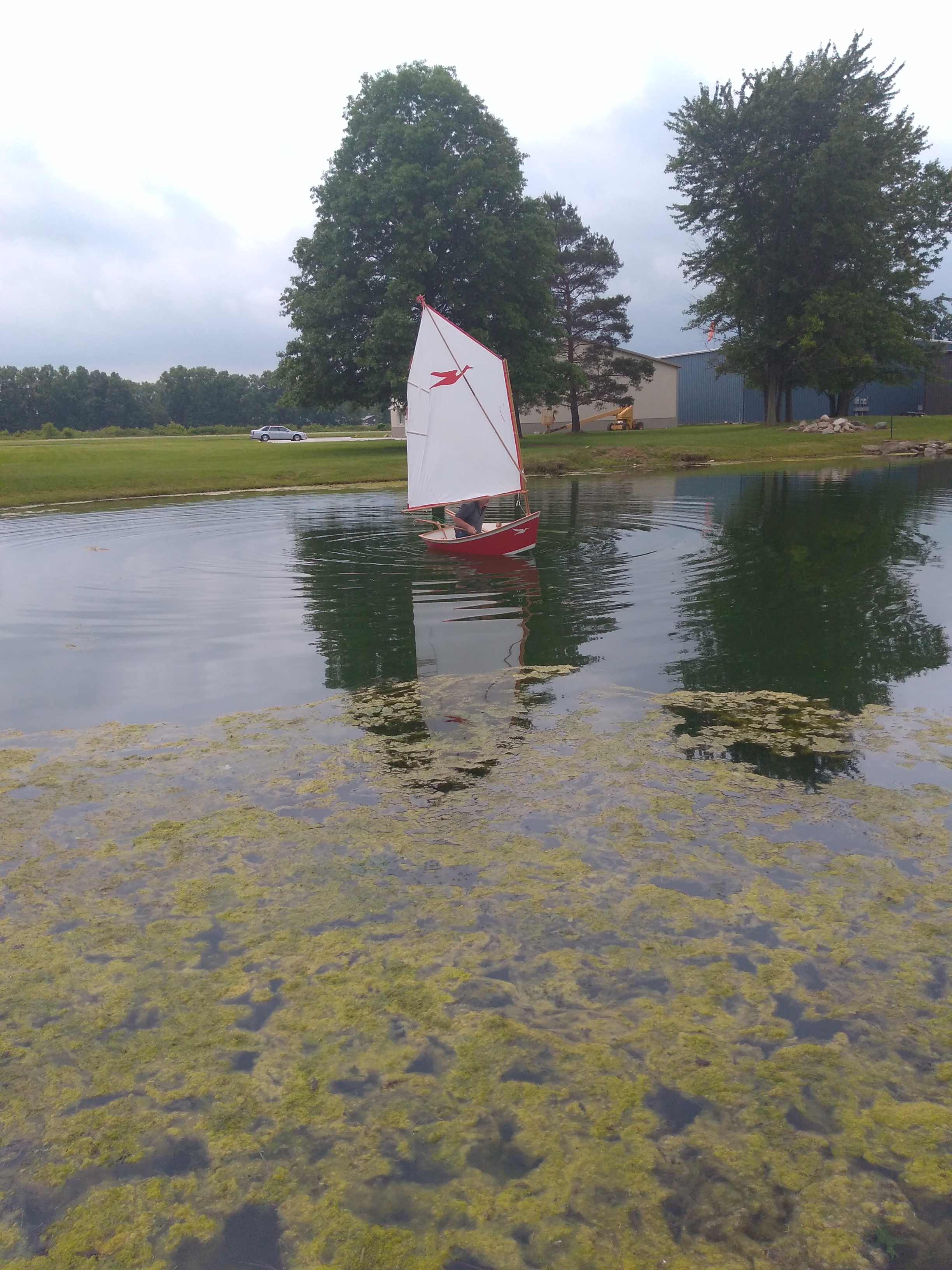
This little 8' sailer is called the Portuguese Dinghy. The boat plans came from Hannu's Boat Yard. The rest I made up. Originally I put a center board in there, but once I hit a huge rock under water and it ripped up the bottom. I boat promptly sank - to the bottom - all 10 inches. So, highly annoyed with my misfortune I never ever built or will build another boat with a center board. I patched up the boat and put a partial shoal keel to it. Hannu designed a really awesome wonderful little boat here. This boat flies, it is fast and it is simple. I sewed up several sails to it, but eventualy I ended up with an Optimist sail to it out of regular nylon from a local fabric shop. I sail this boat often. In two of the pictures, a friend of mine who never, ever sailed, is trying it out in a local pond. He got the idea pretty fast and sailed nicely. This boat is great. 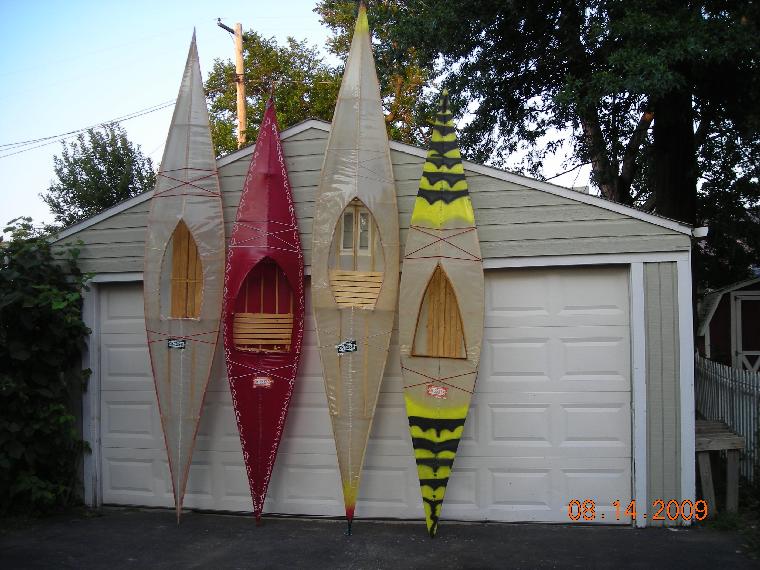
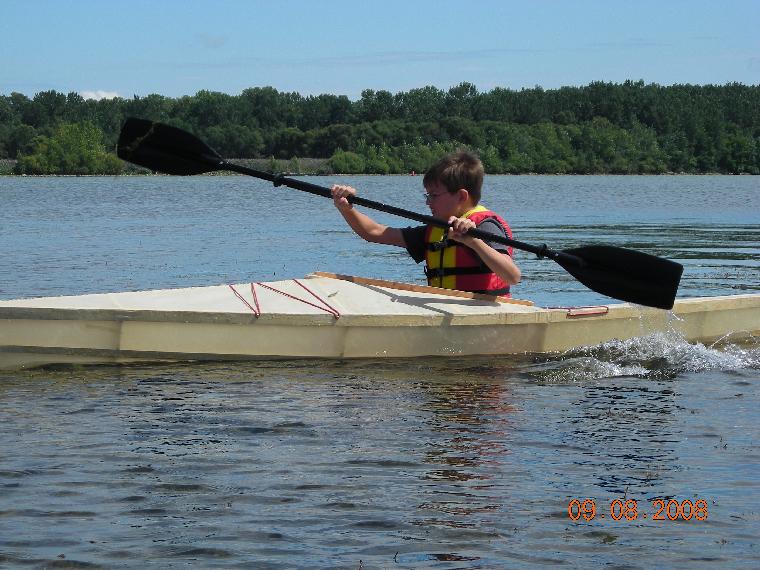

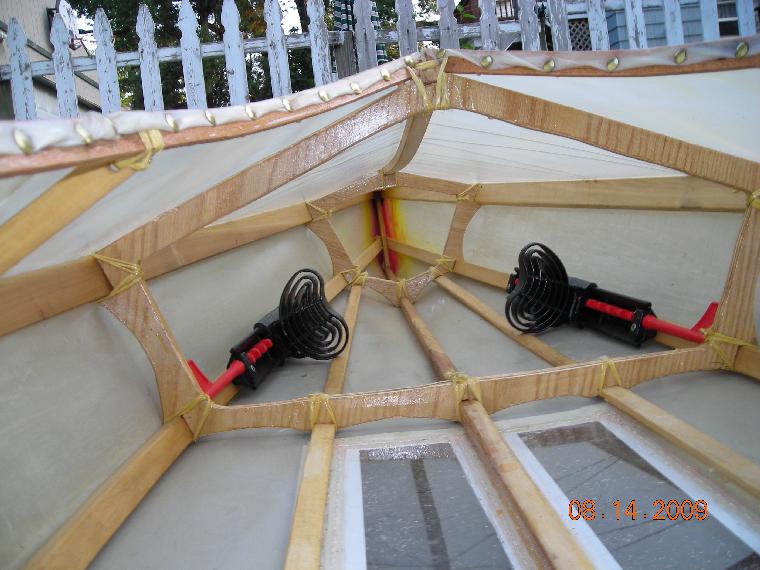
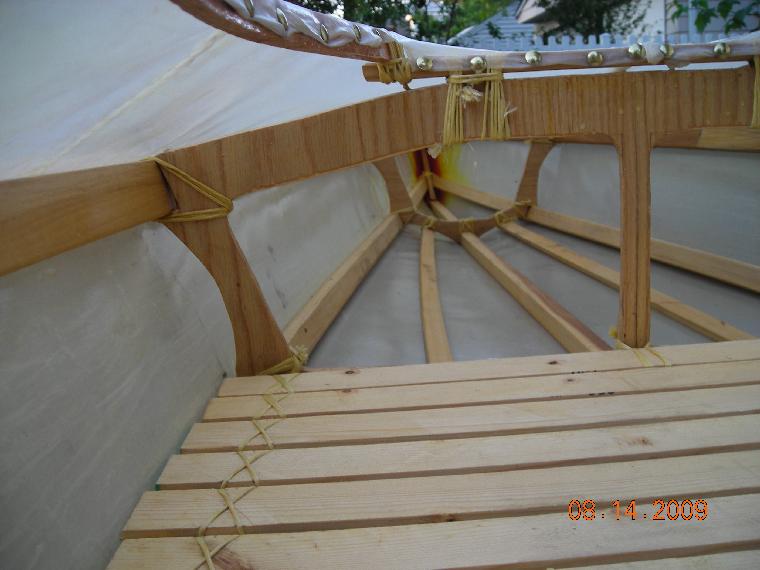
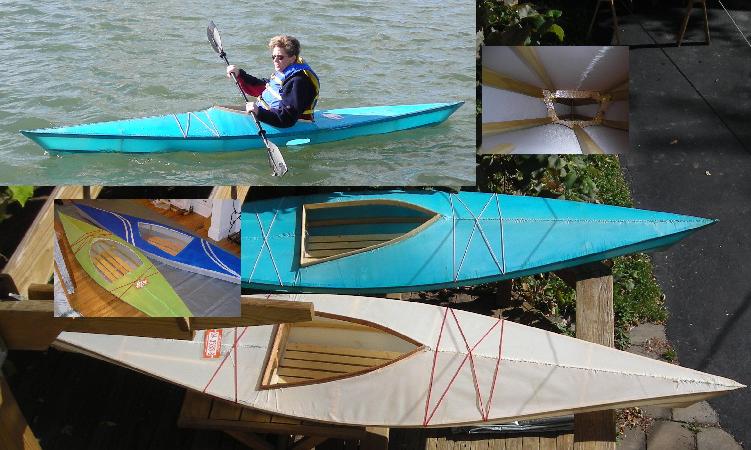
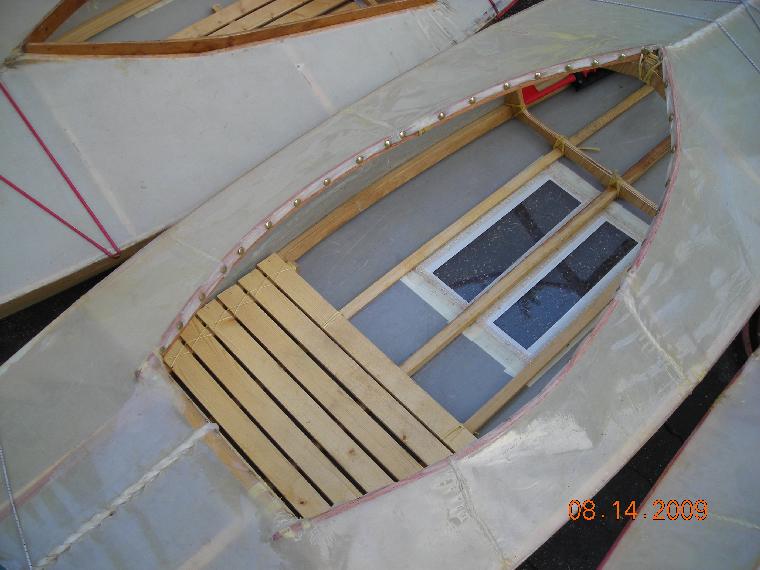

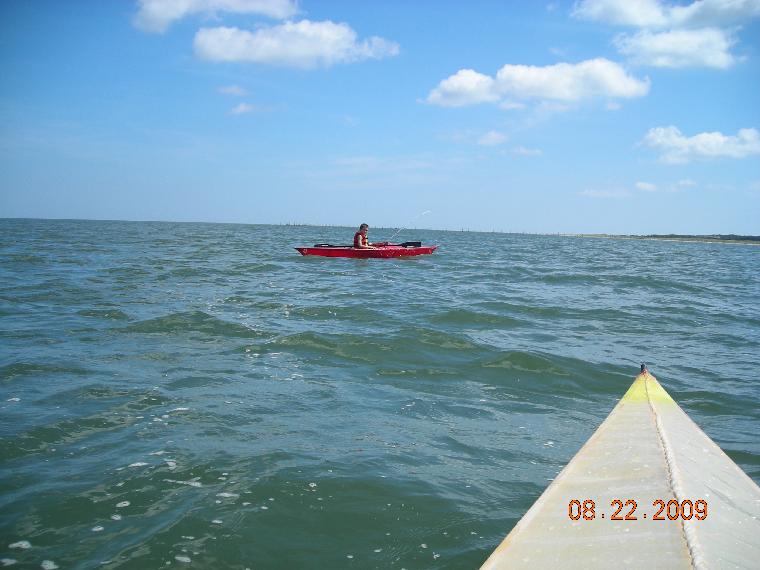
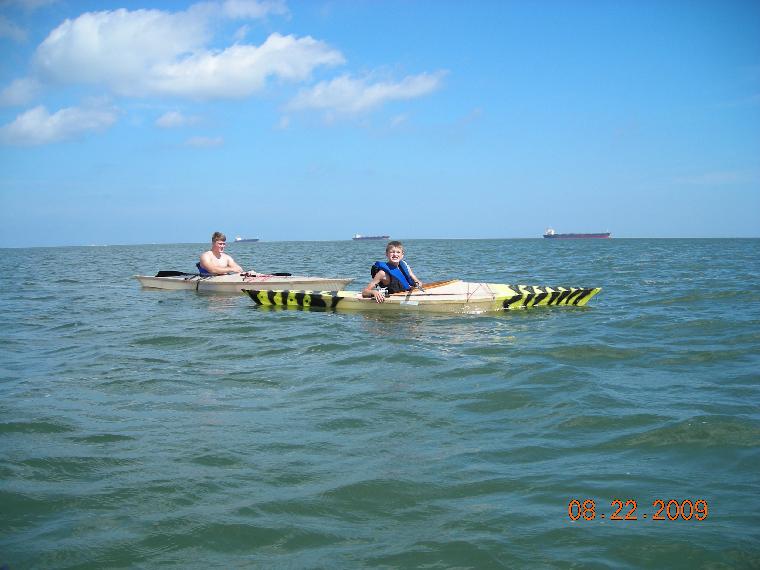
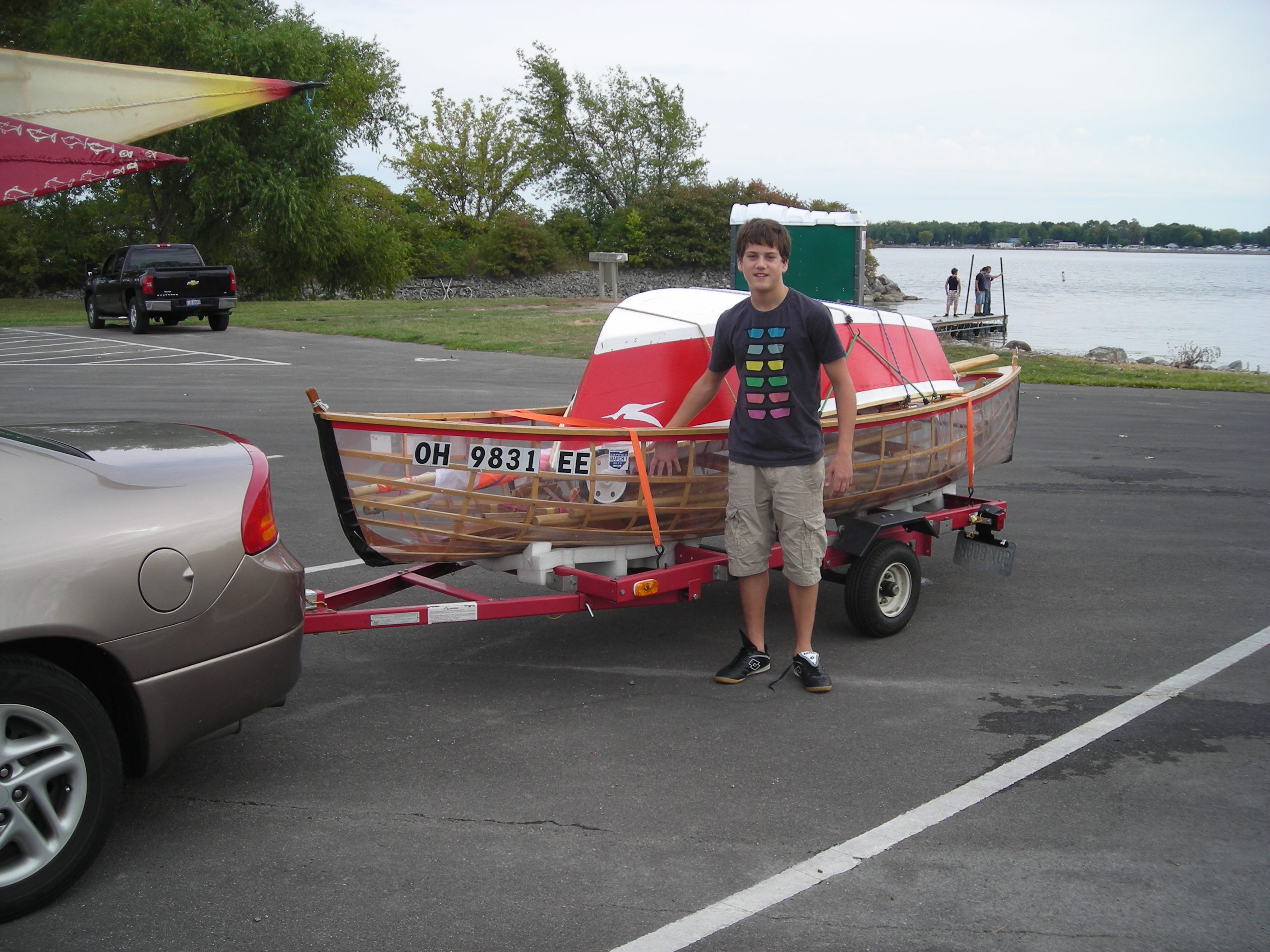
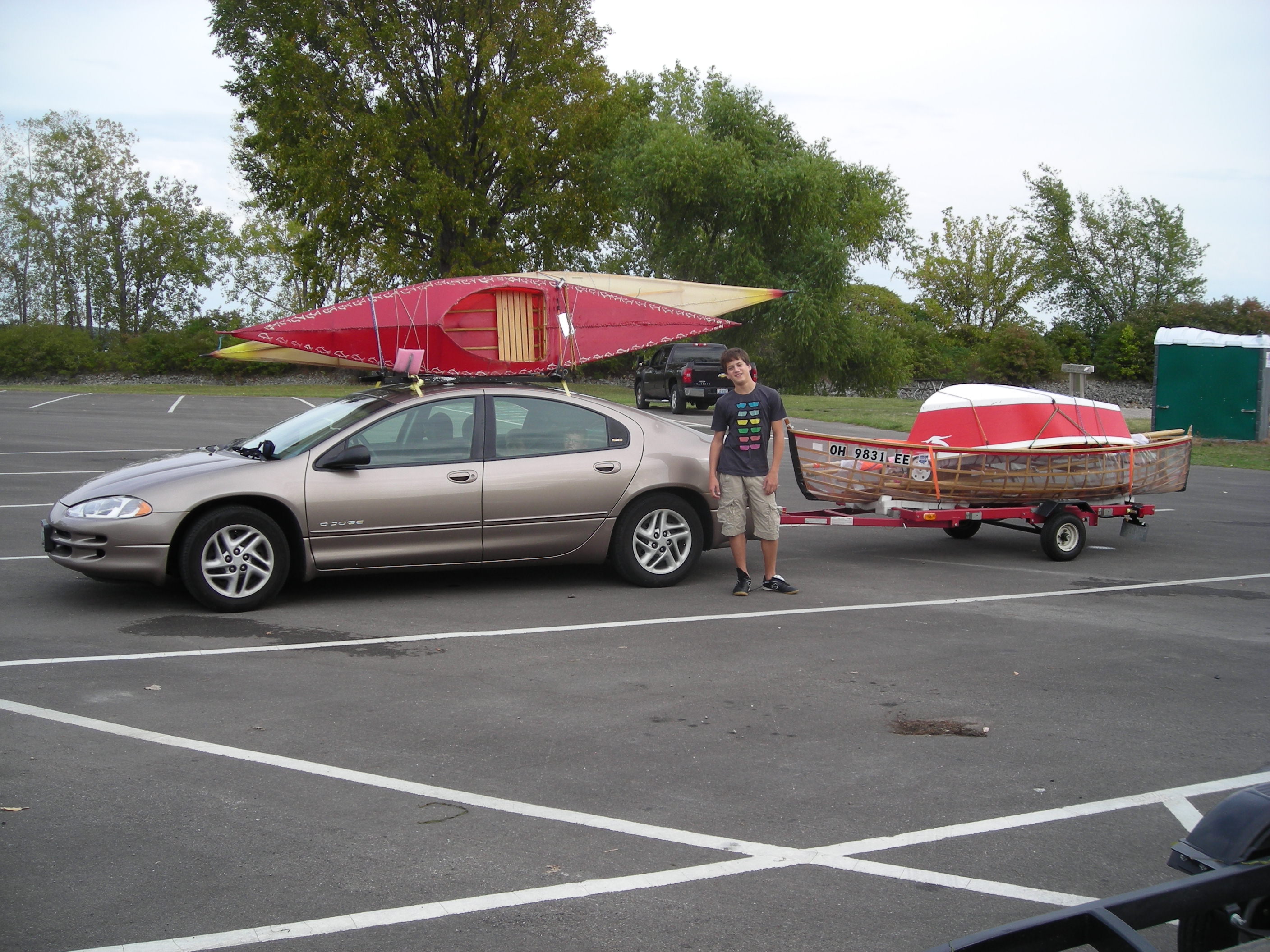
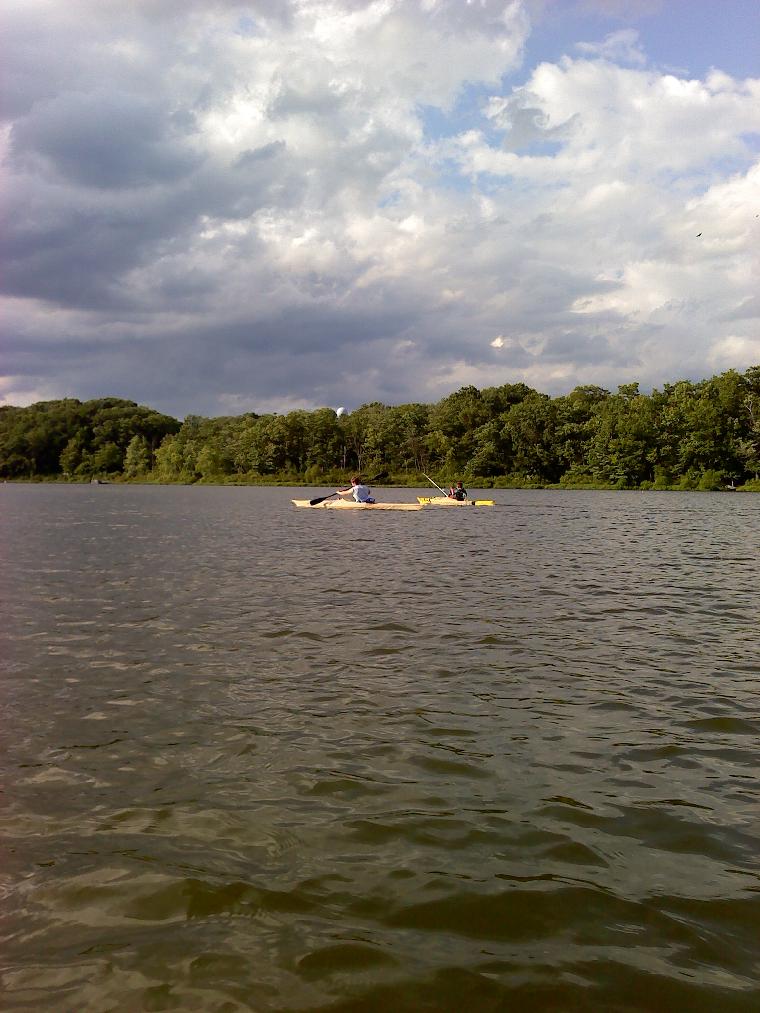
I built a lot of kayaks for the kids. The stations I sawed out of 1/2" ply wood, I believe, the stringers I ripped from poplar. All my kayaks are lashed. Most I built with nylon skin. The nylon is a terrible material for water craft as they losen up as it gets moisture. I sealed them originally with polyurethan - which was another terrible idea - I got from a major skin-on-frame book author. Since then I corresponded with him telling him my experience and he stated that he regretted those in his book. So perhaps, build it first, before you write a book about it. Anyway, many boats' skin now I replaced with dacron, which is an aircraft fabric, from www.aircraftspruce.com. Dacron is not effected by water or moisture, but is heat sensitive. So put the fabric on, and then with a hot iron, shrink the fabric as much as you need it. Then I sealed the fabric with two component resin. The resin is very, flexible, and very durable. 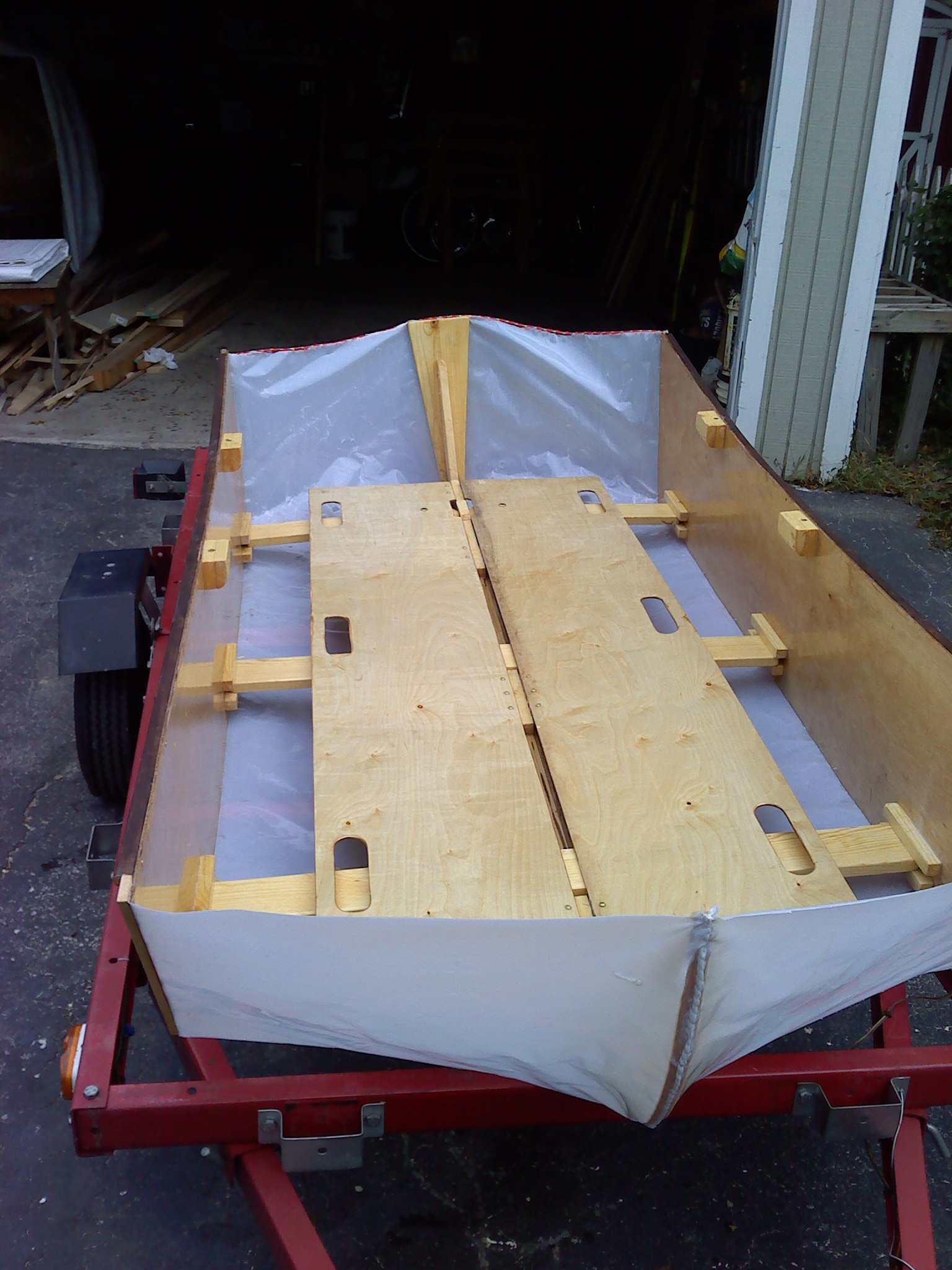
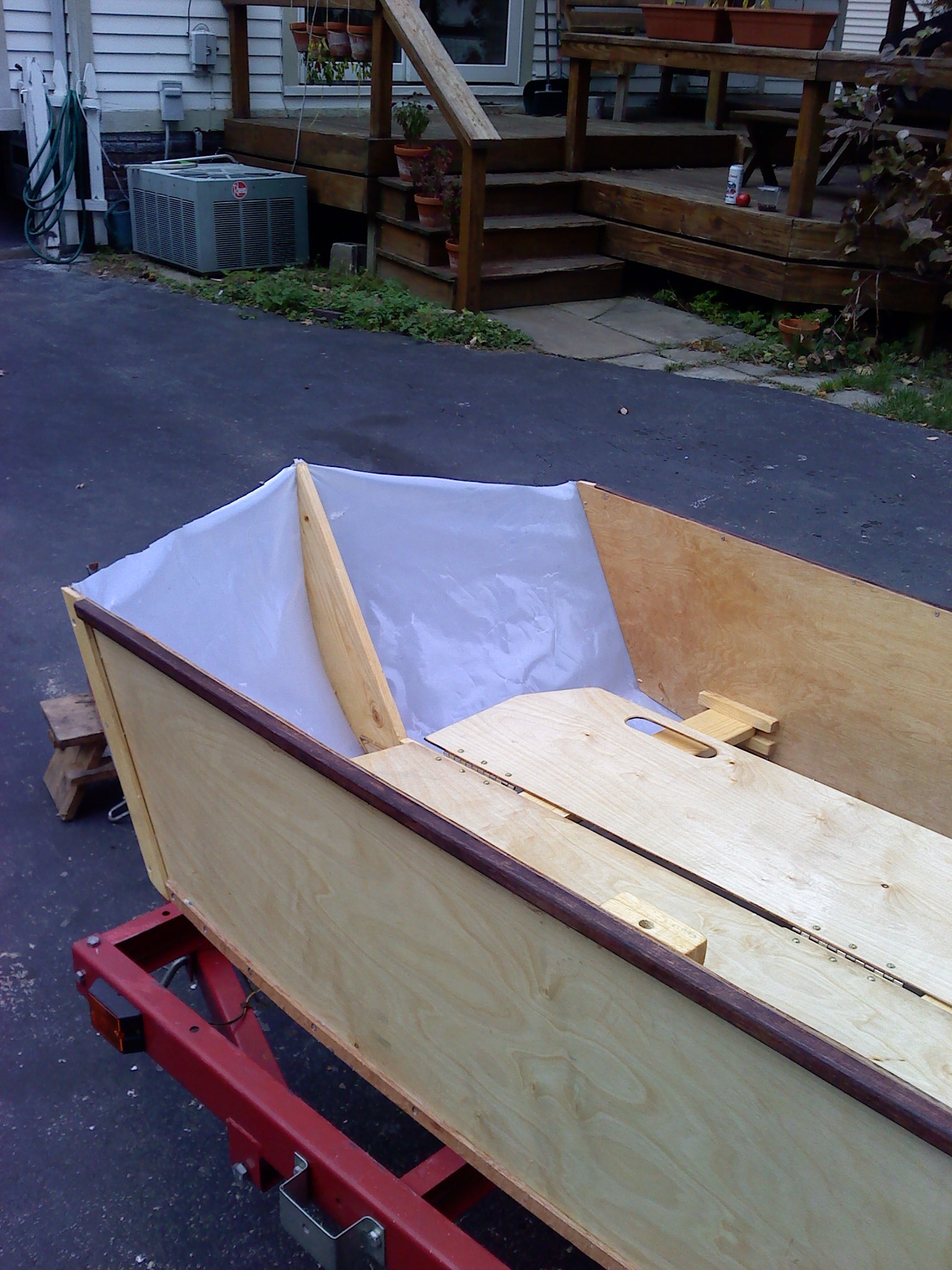
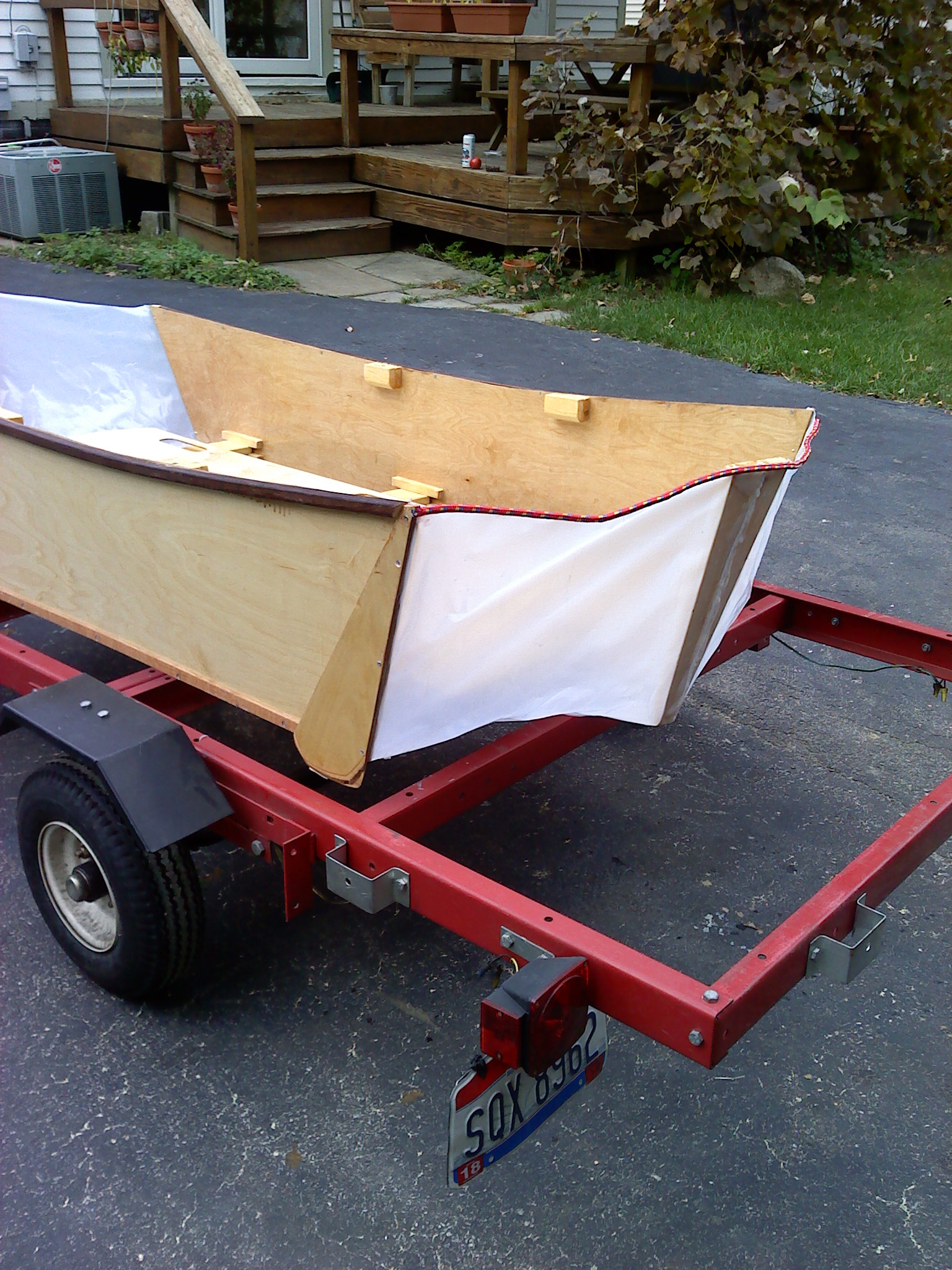
This was an 8' folding boat. I bought the plans from the internet. The concept is good, but the design turned out to be very, very heavy for the size of the boat and the fabric on the front kept buckling in under pressure, forming a scoop of some sort, as I was rowing againts the waves and wind. So the boat turned out to be not water worthy. I dismantled this boat. |
|||
|
|||